|
|
Arcturus is the archway or gateway of consciousness. We pass through it to higher consciousness or to the next life in our soul's evolution. It is the energy gateway of to life, death and rebirth. The Arc in Arcturus takes us to creation: Noah's Ark; Ark of the Covenant, Archetypes.
 360 degrees - 36
|
|
|
|
|
Sarkus
03-02-07, 07:43 AM
Bootes, Arcturus, Serpens? The story of the Garden of Eden. Bootes, the Herdsman, namer of all the animals. Arcturus, the Ark of Noah, and the Ark of the Covenant, what a coincidence? And Serpens, the Serpent, at the heel of Eve!:D
I admire your tenacity in this, MW.
Unfortunately, just 'cos words have the same derivation in ancient Greek and Latin does not imply, let alone prove, the symbology / link that you seem to suggest.
Arcturus comes from the ancient Greek ARKTOUROS - meaning "Bear Guard" - as the star forms the left boot of Bootes the Hunter - which is next to the two Bear constellations - Ursa Major and Ursa Minor.
Arcturus is also derived from the future active participle of "Arcere" - a Latin word meaning to guard or to restrain.
The Greek and Latin etymology would have been from the same ancient root word.
The word "Ark" comes from the Latin "Arca" meaning chest - but there is some confusion as to the actual word "ark" for use in both the "Ark of the Covenant" and "Noah's Ark":
Clicky for explanation etc (http://www.narkas.org/EN/index.php?option=com_content&task=view&id=13&Itemid=29)
The conclusion is that "Ark" in both senses means some form of "box-shape" - presumably "to guard" the contents - hence the possibly similar etymology in ancient languages to the word for "bear-guard" and / or "to restrain / guard".
However, as said, just 'cos words share the same etymology does not imply a purposeful link between the two.
Does the word Centurion immediately imply a link to Alpha-Centauri?
And who was the "Alpha Centurion"?
See what I mean - you could go on and on with such tenuous and unproven links.
|
|
|
|
|
Significado del Nombre Arturo
|
|
Arturo es un nombre masculino de origen etrusco "Artorius", cuyo significado es desconocido; algunos autores establecen su origen en el céltico "Atva", su significado es "Aquel que es fuerte como una piedra o como una roca" o le otorgan un origen griego y lo define como "Aquel que es el guardián de la Osa del Norte"
|
Historia y el Santo
Arturo, rey bretón, lucho contra los anglosajones durante la primera mitad del siglo VI. Su figura esta rodeada de historias y leyendas, según la tradición Arturo era hijo del rey de Britania Uther Pendragon. Al convertirse en rey, forma la Mesa Redonda de Camelot para evitar primacía de unos sobre otros, formada por 12 caballeros de su corte. Lucho con victoria y llego a enfrentarse con el Imperio Romano en Europa, hasta que fue llamado a regresar, pues un sobrino Mordred se había apoderado de su reino. En la batalla donde se enfrenta con el traidor, ambos son alcanzados por una lanza, segun la leyenda Arturo es llevado a la isla de Avalón para sanar sus heridas.
La leyenda de Arturo. Su persona ha sido objeto de numerosas creaciones literarias y artísticas a partir del siglo VI. La leyenda del rey Arturo se desarrolla en la Edad Media, los relatos reúnen mitología celta con algo de hechos verídicos en la historia del legendario rey Arturo. Nos encontramos con el Rey Arturo en cuentos escritos en el siglo IX y X , hasta la versión del escritor inglés Godofredo de Monmouth de 1139 donde vincula al Rey Arturo con el Mago Merlín y cuenta la historia como hemos presentado al Rey Arturo más arriba.
A partir de ahí son numerosas las leyendas históricas que se han sucedido; tal vez la más notable sea la de Roberti de Boron que otorga a la historia leyendas cristianas que vinculan al Rey Arturo y sus caballeros en la Historia del Grial.
San Arturo se celebra: San Arturo, mártir el 1 septiembre y San Arturo Bell, presbítero y mártires 1 diciembre.
|
| Variante de Arturo: |
Arturo variante Artús (forma antigua inglesa de llamar Arturo), también es su forma gallega.
Arturo en otros idiomas, catalán: Artur; frances e ingles: Arthur; italiano: Arturo. |
Famosos, personajes históricos célebres con el nombre de Arturo:
|
- Arturo Soria, nació en Madrid en el año 1844, arquitecto destacado en urbanismo contemporáneo, creador de la teoría sobre la "ciudad lineal", propone un cambio de la ciudad en torno a un núcleo a una cuidad lineal.
- Arturo Pérez-Reverte, nació en Cartagena, España en el año 1951. Novelista destaca con gran éxito popular. Entre algunas de sus obras: "La tabla de Flandes", 1990; "No me cogeréis vivo", 2005.
- Arthur Millar, nació en Nueva York en el año 1915; uno de los escritores de obras de teatro más destacados del siglo XX. Entre sus obras: "Todos eran mis hijos", 1947; "Muerte de un vigilante", 1949.
- Arthur Colley Wellesley, duque de Wellington; nació en Dublín en el año 1769; vencedor a Napoleón I Bonaparte en la batalla de Wateroo.
|
|
|
|
|
|
¿PORQUE LA INTERRELACION DE WASHINGTON D.C CON LA GRAN PIRAMIDE EN CONTEXTO A LA GEMATRIA "NUESTRO SEÑOR JESUCRISTO", CODIFICADA INCLUSO EN EL MERIDIANO DE BELEN A 31;68 GRADOS? ¿PORQUE LA EUCARISTIA CATOLICA TIENE FORMA DE LUNA LLENA? NEXO CON INDEPENDENCIA DE EEUU-RAQUEL (LUNA LLENA SEGUN GENESIS 37) Y BENJAMIN EL LOBO (GENESIS 48)-¿EL LOBO NO ATACA EN LUNA LLENA?
  
In the beginning was the Word, and the Word was with God, and the Word was God. The same was in the beginnning with God. John 1: 1-2
If root words in Hebrew are used to proclaim this Biblical truth, the identity of the Word is confirmed. (Strong's number indicated for each word)
In the beginning (H7225) was (H1961) the Word, (H1697) and the Word (H1697) was (H1961) with (H5973) God, (H430) and the Word (H1697) was (H1961) God. (H430) The same (H1931) was (H1961) in the beginning (H7225) with (H5973) God (H430) and was (H1961) the Son (H120) of God. (H430)
ראשִׁית הִיה דּבר דּבר הִיה עם אלהִים דּבר הִיה אלהִים הוּא הִיה ראשִׁית עם אלהִים הִיה בּן אלהִים
86 + 52 + 20 + 86 + 110 + 911 + 20 + 12 + 86 + 20 + 206 + 86 + 110 + 20 + 206 + 206 + 20 + 911 = 3168
Lord Jesus Christ = Κυ̍̍ριος ̔’Ιησοῦς Χριστο̍ς = 800 + 888 + 1480 = 3168
In the New Testament, the word "rhabboni" is used only twice, both times in regard to Jesus.
Jesus (G2424) is (G2076) the only begotten (G3439) Son (G5207) of God, (G2316) Rhabboni. (G4462)
̔’Ιησοῦς ’εστι̍ ὁ μονογενης Υιος Θιος Ραββονι = 888 + 515 + 70 + 496 + 680 + 284 + 235 = 3168
LORD JESUS CHRIST = Κυριος ̓’Ιησοῦς Χριστος = 800 + 888 + 1480 = 3168
Virgin (G3933) born (G1080) of God, (H2316) the onlybegotten (G3439) Son (G5207) of God. (H2316)
Παρθενος γενναω Θεος μονογενης Υιος Θεος = 515 + 909 + 284 + 496 + 680 + 284 = 3168
WHITEHOUSE PENTAGON AND THE GREAT PYRAMID and NUMBER GEMATRIA CHRIST 3168
RELACION CON LA GRAN PIRAMIDE, LA NUEVA JERUSALEM, EL DIAMETRO DE LA TIERRA Y LA LUNA
281. Hechos 4:11: Este Jesús es la PIEDRA reprobada por vosotros los edificadores, la cual ha venido a ser cabeza del ángulo.
OIKODOMEO (GEMATRIA)=1089=792+297=33X33
792=GEMATRIA DE NUESTRO SEÑOR JESUCRISTO EN HEBREO
297=GEMATRIA DE MARIA MAGDALENA EN GRIEGO
152 MAS 145 ES IGUAL A 297
The number difference for the mirror pair 65 and 56 results in 1089. The mirror of the result, 9801 can be expressed as 33 x 297. Adding the various results to their mirrors often sums to 1089 --
|
396 + 639 = 1089
297 + 792 = 1089
495 + 594 = 1089
|
The number 1089 and its mirror, 9801, are the squares of double digit pairs --

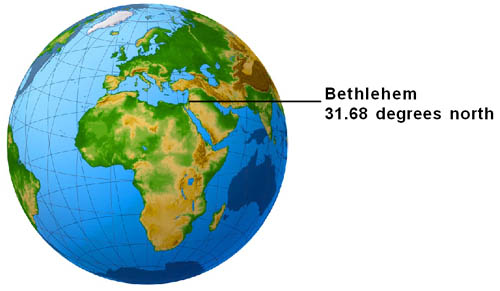
BETHLEHEM TIENE UN NEXO CON VIRGO (CASA DE PAN). WASHINGTON D.C/(VIRGINIA Y MARYLAND/COLUMBIA) ESTA DISEÑADO EN FUNCION A VIRGO POR SU NEXO CON LA GRAN PIRAMIDE (ARTURO/CRISTO), BETHLEHEM (CASA DE PAN)/VIRGO (MARIA MAGDALENA) Y SPICA (GRIAL). VIRGO TIENE UNA ESPIGA/GRIAL EN LA MANO, AL IGUAL QUE COLUMBIA/ISTAR POSEE UNA ANTORCHA COMO SIMBOLO DE ILUMINACION. EL MENSAJE ES QUE LA LUZ DE ISTAR ES LA ESTRELLA/GRIAL QUE DA A LUZ ISTAR QUE ES LA MISMA ESPIGA DE TRIGO QUE TIENE VIRGO. DETRAS DE LA INDEPENDENCIA DE EEUU (DIA NUMERO 119/LUNA LLENA 8 DE MARZO), EN EL CONTEXTO A QUE LA VERDADERA INDEPENDENCIA FUE UN 2 DE JULIO ES QUE EEUU/WASHINGTON/MARTE/CYDONIA/GRIAL/ROJO/BENJAMIN. ESTO EXPLICA DESDE OTRA PERSPECTIVA SU NEXO CON RAQUEL (OVEJA) Y EL LOBO (BENJAMIN). RECORDEMOS QUE MARCOS DERIVA DE MARTE.

http://asteromia.net/peliculas/pelibarridoorion.html
WASHINGTON D.C ESTA DISEÑADO EN FUNCION A ORION. OBSERVEN EN ESTE ENLACE QUE AL COMIENZO DE LA ERA CRISTIANA (ESPIGA/SPICA/OBELISCO DE WASHINGTON D.C) ESTABA EN EL ECUADOR Y QUE EN EL 2012 MINTAKA (ESTRELLA DE ORION) ESTA UBICADO EN EL ECUADOR. PINCHE EN EL ENLACE Y VEALO USTED MISMO. ¿LA UBICACION DEL OBELISCO FRENTE A MINTAKA/ORION EN EL 2012 SIMBOLIZA A LA CONCEPCION/NACIMIENTO DEL GRIAL EL 21/12/2012 (21+12=33)? ES CURIOSO QUE SPICA ESTABA EN EL ECUADOR AL COMIENZO DE LA ERA CRISTIANA. ¿PORQUE ESTABA JUAN MARCOS/DISCIPULO AMADO CON PEDRO EN LA RESURRECCION DE CRISTO SEGUN EL EVANGELIO DE JUAN? ¿SIMBOLIZABA JUAN MARCOS A LA ESPIGA DE TRIGO?

CRISTO ES ARTURO/ BOOTES, MARIA MAGDALENA/VIRGO Y SPICA (ESPIGA DE TRIGO INTERRELACIONADA CON PENTECOSTES QUE ES LA FIESTA DE LA COSECHA DE TRIGO) ES EL GRIAL (JUAN MARCOS). LA CASA BLANCA YANQUE SIMBOLIZA A JESUCRISTO, EL CAPITOLIO A MARIA MAGDALENA Y EL OBELISCO AL GRIAL MISMO.
VIRGO (CASA DE PAN) Y SU RELACION CON RAQUEL, LA ESPOSA AMADA DE JACOB/ISRAEL
32. Génesis 30:6: Dijo entonces Raquel: Me juzgó Dios, y también oyó mi voz, y me dio un hijo. Por tanto llamó su nombre DAN.
1. Génesis 35:19: Así murió Raquel, y fue sepultada en el camino de Efrata, la cual es Belén.
2. Génesis 48:7: Porque cuando yo venía de Padan-aram, se me murió Raquel en la tierra de Canaán, en el camino, como media legua de tierra viniendo a Efrata; y la sepulté allí en el camino de Efrata, que es Belén.
- La Virgen María es la constelación de Virgo. América está en Virgo. El antiguo símbolo de Virgo es una "m" cambió. Esto explica por qué el nombre de María como otras madres vírgenes, como la madre de Adonis, Mirra, o el de la madre de Buda, Maya, comienza con una M. Virgo (constelación de Virgo) también se conoce como la "Casa del pan", y la representación de Virgo es una Virgen que sostiene una gavilla de trigo. Esta "casa del pan" y su símbolo de trigo representa agosto y septiembre, cuando la cosecha. A su vez, Belén (Belén), es la traducción literal de "La Casa del Pan". Belén es también la referencia a la constelación de Virgo, un lugar en el cielo, no en la Tierra.
OTRO DETALLE ES QUE 3168=96X33=9X352=9X11X32=9X11X8X4
TENEMOS OTRO NEXO, EN ESTE CASO EN LA GEMATRIA DE NUESTRO SEÑOR CON WASHINGTON D.C CON EL 911, EL NUMERO 33 Y EL NUMERO 8 (RESURRECCION DE CRISTO/JUBILEO/7 AÑOS SABATICOS MAS JUBILEO/LEVITICO 25:8)
YHWH MANEJA TODO. ¿USTED CREE QUE NO MERECE NUESTRA ADORACION?
LA VERDAD OS HARA LIBRE
|
|
|
|
|
La LINEA ROSA/(ROSE LINE) que pasa por el MERIDIANO DE PARIS, tiene un OBVIO NEXO CON LA LINEA ROSA de WASHINGTON D.C. En el codigo DA VINCI, recordemos que Robert Landon y Sophie encuentran la CLAVE DEL CRIPTEX QUE ES MANZANA/APPLE.
| apple in Simple Gematria Equals: 50 |
( |
a
1 |
p
16 |
p
16 |
l
12 |
e
5 |
) |
Hay un obvio nexo kavalistico con el numero 33 sumando las primeras tres letras y con el numero 50 (Jubileo) sumando sus 5 letras. APPLE incluso tiene interrelacion segun el libro de PROVERBIOS CON LA SABIDURIA/SOPHIA (GRIEGO)/NUMERO DE ORO/PHI.
| phi in Simple Gematria Equals: 33 |
( |
p
16 |
h
8 |
i
9 |
) |
MANZANA de oro con figuras de plata
Es la palabra dicha como conviene.
¿SE ACUERDAN QUE SO-PHI-E INGRESA CON SU LLAVE/KEY LA SERIE DE FIBONACCI EN EL BANCO PARA ENCONTRAR EL CRIPTEX?
Es obvio QUE ES UN NEXO EN OTRO CONTEXTO CON LA SABIDURIA/SO-PHI-A/SALMOS 45:9 (REINA DE ORO VESTIDA CON ORO DE O-PHI-R)/NUMERO DE ORO PHI=1.618033
| phi in Jewish Gematria Equals: 77 |
( |
p
60 |
h
8 |
i
9 |
) |
| phi in English Gematria Equals: 198 |
( |
p
96 |
h
48 |
i
54 |
) |
| phi in Simple Gematria Equals: 33 |
( |
p
16 |
h
8 |
i
9 |
) |
¿PORQUE PHI EN HEBREO ME DA 77? ¿HAY UN NEXO PARIS WASHINGTON D.C EN EL CONTEXTO A LA LINEA ROSA/ROSE LINE DEL CODIGO DA VINCI? ¿PORQUE LA DIFERENCIA ENTRE AMBOS MERIDIANOS ES DE 77? OBSERVEN INCLUSO QUE LA MANZANA TIENE CONNOTACION CON ADAN Y EVA (FUERTE NEXO CON EL DISEÑO DE WASHINGTON D.C EN EL CONTEXTO A ADAN/BOOTES/ARTURO Y EVA/VIRGO)?
|
|
|
|
|
EN LA FECHA 15 DE AGOSTO ESTA IMPLICITO Y EXPLICITO EL NUMERO PI Y EL NUMERO DE ORO, NUMEROS BAJOS LOS CUALES FUERON DISEÑADOS LA GRAN PIRAMIDE
GENESIS 49
49:8 Judá, te alabarán tus hermanos; Tu mano en la cerviz de tus enemigos; Los hijos de tu padre se inclinarán a ti.
49:9 Cachorro de león, Judá; De la presa subiste, hijo mío. Se encorvó, se echó como león, Así como león viejo: ¿quién lo despertará?
49:10 No será quitado el cetro de Judá, Ni el legislador de entre sus pies, Hasta que venga Siloh; Y a él se congregarán los pueblos.
¿PORQUE MARIA MAGDALENA UNGE LOS PIES DE JESUS EN49:11 Atando a la vid su pollino, Y a la cepa el hijo de su asna, Lavó en el vino su vestido, Y en la sangre de uvas su manto.49:12 Sus ojos, rojos del vino, Y sus dientes blancos de la leche. (LAODICEA=ILUMINACION=APOCALIPSIS 3:14. LA ILUMINACION en la tora tiene un fuerte contexto con MARIA MAGDALENA Y EL SANTO GRIAL. En la pelicula "EL CODIGO DA VINCI" cuando ROBERT LANGDON Y SOPHIE NEVEU van a la mansion del INGLES SIR LEIGH TEABING es increible que PREVIO A QUE ESTE ULTIMO le revele a SOPHIE el nexo de MARIA MAGDALENA CON LEONARDO DA VINCI le hace cerrar los ojos y le pregunta de cuantas copas habia en la mesa en la SANTA CENA y justamente ella responde que una sola. TEABING, un ingles, cuando SOPHIE abre los ojos (ILUMINACION) le muestra que en dicha pintura no hay ninguna copa y que el GRIAL ES JUSTAMENTE LA MUJER QUE ESTA A LA DERECHA DEL SEÑOR CON PELO ROJIZO. LA ILUMINACION EN LA TORA ESTA 100% INTERRELACIONADA CON LA ESPOSA DE NUESTRO SEÑOR JESUCRISTO)

La gran piramide esta diseñada INCREIBLEMENTE en funcion a la ASUNCION DE LA VIRGEN (MARIA MAGDALENA) Y EL SANTO GRIAL. El 15 de agosto (dia numero 227 QUE EQUIVALE AL NUMERO PI (PI-RAMIDE/PYRAMID/P-YRAM-ID/MARY), que tambien esta UBICADO EN UNA POSICION AUREA (NUMERO DE ORO). EL ORO SIMBOLIZA AL GRIAL. EL SALMO 45:9 al hacer referencia a la REINA VESTIDA CON ORO DE O-PHI-R es un OBVIO NEXO ESPIRITUAL CON EL SANTO GRIAL en el contexto al NUMERO DE ORO (GOLDEN NUMBER) PHI=1.618033 INTERRELACIONADO CON EL HUEVO DE PASCUA en el contexto a que los conejos justamente se reproducen en forma AUREA. EL ORO ES UNA OBVIA INTERRELACION A LA ALQUIMIA/ESCALERA DE JACOB/CUADRATURA DEL CIRCULO/NUMERO 5/NUMERO DE ORO. EL MISMO NUMERO 5 ESTA DISEÑADO BAJO ESTE PATRON EN EL CONTEXTO a que en la parte superior es cuadrada y en la parte inferior es circular. El compas (masonico) simboliza el circulo (el cielo) y la escuadra simboliza el cuadrado (la tierra). LA G INFERIOR SIMBOLIZA A GOD/GNOSIS/GALAXY/GRIAL.
El 15 de agosto esta ubicado en la posicion DE ORO. 365.242256/227=1.6089 (Numero muy cercano al NUMERO DE ORO PHI=1.618033). Incluso tambien este dia esta en posicion aurea en contexto a la primera y ultima aparicion de la virgen de Fatima (13 de mayo y 13 de octubre), entre el 4 de julio y 11 de septiembre (VERDADERO MENSAJE DEL 911), VIRGEN DE LOURDES (11 DE FEBRERO Y 8 DE DICIEMBRE). TAMBIEN EL VERDADERO PENTECOSTES ESTA UBICADO EN UNA POSICION DE ORO COMPARADA CON LA FIESTA DE LOS TABERNACULOS. El 15 de agosto (numero 227 y en la semana numero 33) tiene origen del CALENDARIO DE NOE. Concretamente LA GRAN PIRAMIDE ES UN PARALELO AL MONTE DE ARARAT, adonde REPOSO EL ARCA DESPUES DE 7 MESES (210 DIAS) y 17 dias (TOTAL=227 DIAS). EL MENSAJE AQUI ES QUE EL ARCA DE NOE NO FUE UN MITO. LA EXISTENCIA DE PIRAMIDES A NIVEL MUNDIAL DEMUESTRA QUE DICHA ARCA FUE UNA REALIDAD, obviamente subestimada por la FALSA CIENCIA. LA NUEVA JERUSALEM TAMBIEN ESTA DISEÑADA BAJO ESTE PATRON. LOS CIENTIFICOS TRUCHOS, COMO ODIAN AL CREADOR, NIEGAN EL NEXO CIENTIFICO CON LA TORA. DESGRACIADAMENTE TIENEN EL EGO MUY INFLADO Y NO LES CONVIENE ANALIZAR LA CREACION PARA ENTENDER AL UNICO Y VERDADERO DIOS,simbolizados por NUESTROS PADRES ESPIRITUALES NUESTRO SEÑOR JESUCRISTO Y NUESTRA MADRE MARIA MAGDALENA. EL MAYOR CIENTIFICO DE TODA LA HISTORIA, que fue SIR. ISAAC NEWTON, fue UN GRAN RELIGIOSO Y NUNCA DEJO DE ESTUDIAR LA TORA. SIR ISAAC NEWTON TIENE MUCHA IMPORTANCIA EN EL CODIGO DA VINCI.
EL MENSAJE DE LA PI-RAMIDE ES QUE ESTA DISEÑADA EN FUNCION A LA CUBICACION DE UNA ESFERA (CUADRATURA DE UN CIRCULO), osea la ESCALERA DE JACOB (GENESIS 28-CASA DE DIOS Y PUERTA DEL CIELO/SANTO GRIAL). En la linea rosa (ROSE LINE) que es la que pasa por PARIS, sabemos que cientificamente de la misma se diseño el METRO/METER EN INGLES QUE EQUIVALE A MADRE EN GRIEGO. Sabemos tambien que el MERIDIANO DE PARIS ES UN OBVIO CIRCULO Y QUE TIENE UN OBVIO NEXO CON EL NUMERO PI.
EY = .5, The apothem is phi/1.618. This makes the 51 degree + degree angle.
Using a² + b² = c², this makes the height the square root of phi.
| phi in Simple Gematria Equals: 33 |
( |
p
16 |
h
8 |
i
9 |
) |
| ophir in Simple Gematria Equals: 66 |
( |
o
15 |
p
16 |
h
8 |
i
9 |
r
18 |
) |
66=33X2
La PI-RAMIDE de LOUVRE, tiene nexo esoterico en el contexto al metro/maestro/master/mister/istar/star/estrella/santo grial. Maestro tiene un fuerte nexo espiritual en la tora con el salmo 119 (muy interrelacionado con el santo Grial)
Sabemos que tambien que la distancia promedio de la tierra a Marte es de 227000000 de Km. Vemos tambien un nexo del 15 de Agosto, ROSE LINE, METRO, MARTE insisto en el contexto a que dicho dia es el numero 227=22/7=NUMERO PI DEL CALENDARIO GREGORIANO. ¿PENSAR QUE hay gente que afirma en INTERNET QUE EN LA BIBLIA NO SE CONOCIA EL PI?
MARCOS/MARTE/ROJO-LA SANGRE ROJA SIMBOLIZA A JUAN MARCOS, EL HIJO DE NUESTRO SEÑOR JESUCRISTO Y MARIA MAGDALENA. CONCRETAMENTE ROSE LINE tiene un NEXO CIENTIFICO CON MARTE/ROJO. ESTO EXPLICA DESDE OTRA PERSPECTIVA el porque LEONARDO DA VINCI LA PINTO PELIROJA A MARIA MAGDALENA. YHWH MUEVE LOS HILOS DEL MUNDO. Noten que en el mismo nombre de LEO-NARDO ESTA EN CLAVE LA ASUNCION DE MARIA MAGDALENA (CON NARDO NUESTRA MADRE UNGIO REY A JESUCRISTO) EN BETANIA.
PHI=NUMERO DE ORO=1.618033
FI=PHI=NUMERO DE ORO=1.618033
171. Salmos 45:9: Hijas de reyes están entre tus ilustres;Está la REINA a tu diestra con oro de OPHIR.
SO-FI-A/SOPHIA/S-OPHI-A/SO-PHI-A/SABIDURIA/S-OFI-A/FI-L-OFI-A
REINA VESTIDA CON ORO DE O-PHI-R/OFIR
ESTA TODO CALCULADO. SALMOS 45:9, EN CLAVE, HACE REFERENCIA AL NUMERO DE ORO PHI PARA GLORIA DEL CREADOR DEL UNIVERSO Y DE CRISTO Y MARIA MAGDALENA.
MARTE Y VENUS ESTAN DISEÑADOS EN FUNCION AL SANTO GRIAL (NUMERO DE ORO PHI=1.618033)
EL diseño cientifico de MARTE en funcion al NUMERO DE ORO, y al NUMERO PI es un OBVIO NEXO ESPIRITUAL con el SANTO GRIAL. No olvidemos que el EXODO DE EGIPTO, osea la PASCUA, fue en el primer mes hebreo que en el gregoriano equivale a MARZO/MARTE.
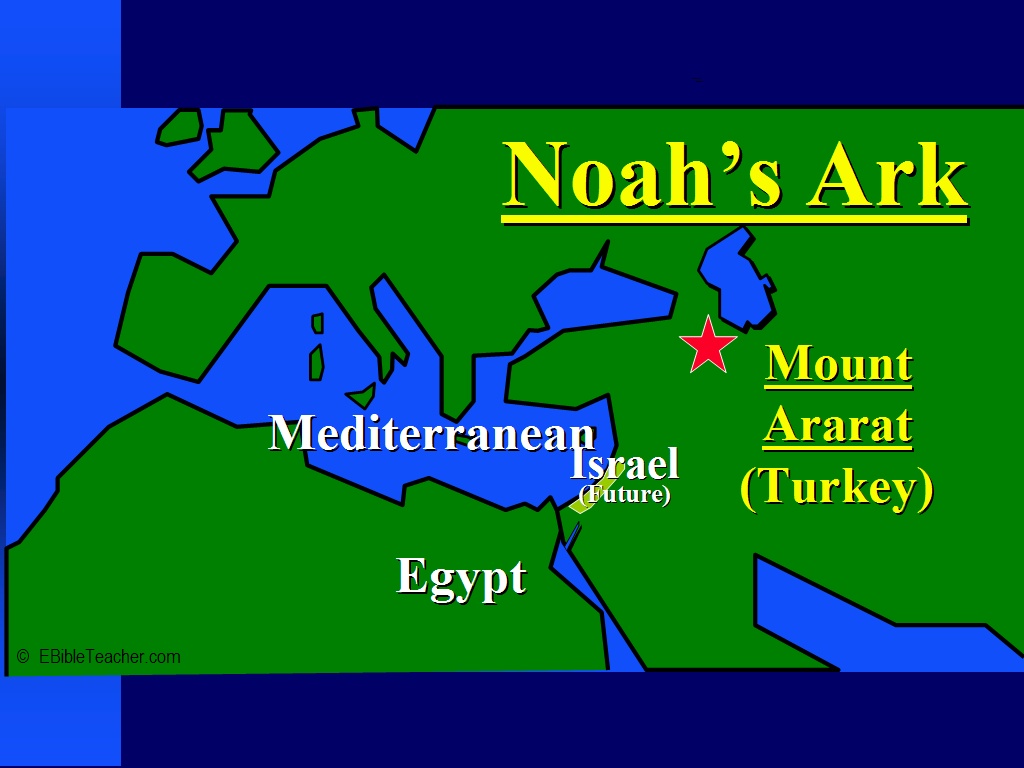 
La LINEA ROSA/(ROSE LINE) que pasa por el MERIDIANO DE PARIS, tiene un OBVIO NEXO CON LA LINEA ROSA de WASHINGTON D.C. En el codigo DA VINCI, recordemos que Robert Landon y Sophie encuentran la CLAVE DEL CRIPTEX QUE ES MANZANA/APPLE.
| apple in Simple Gematria Equals: 50 |
( |
a
1 |
p
16 |
p
16 |
l
12 |
e
5 |
) |
Hay un obvio nexo kavalistico con el numero 33 sumando las primeras tres letras y con el numero 50 (Jubileo) sumando sus 5 letras. APPLE incluso tiene interrelacion segun el libro de PROVERBIOS CON LA SABIDURIA/SOPHIA (GRIEGO)/NUMERO DE ORO/PHI.
| phi in Simple Gematria Equals: 33 |
( |
p
16 |
h
8 |
i
9 |
) |
MANZANA de oro con figuras de plata
Es la palabra dicha como conviene.
¿LA MANZANA ES UNA RELACION CON EL ORO/NUMERO DE ORO PHI/SO-PHI-A, OSEA CON MARIA MAGDALENA LA NUEVA EVA? ¿PORQUE A NEWTON, EL MAYOR CIENTIFICO DE LA HISTORIA DESCUBRIO LA LEY DE LA GRAVITACION UNIVERSAL EN EL CONTEXTO A LA CAIDA DE UNA MANZANA? ¿PORQUE SIR. ISAAC NEWTON, UN GRAN ESTUDIOSO DE LA TORA TIENE MUCHA RELEVANCIA EN EL "CODIGO DA VINCI"? NOTEN EL NEXO EVANGELIO CON EVA Y ANGEL, OSEA EL ANGEL DE EVA, OSEA EL LINAJE DE EVA QUE ES EL SANTO GRIAL. PRIMERO CRISTO Y LUEGO SU LINAJE.
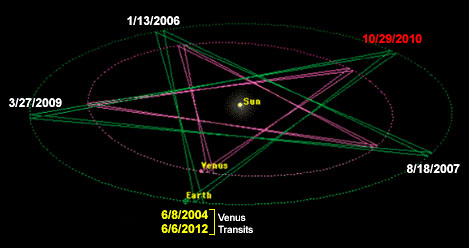
ES OBVIA LA INTERRELACION CON EL CICLO DE VENUS, EN EL CONTEXTO AL NUMERO DE ORO PHI=1.618033 Y A LA SERIE DE FIBONACCI CON LA MANZANA COMO LO EXPRESA LA TORA EN FUNCION AL LIBRO DE PROVERBIOS. HAY TAMBIEN UN NEXO CON EL JUBILEO (CICLO DE 50 AÑOS) EN FUNCION A LA GEMATRIA DE APPLE. ¿CASUALIDAD QUE LA SANTA CENA ESTA DISEÑADA (NUMERO 616) EN LA CANTIDAD DE CICLOS DE LUNARES, EN LA CANTIDAD DE CICLOS DE VENUS EN DICHO CICLO? LA RELIGION ES CIENCIA PURA.

NOTEN QUE EN SU MISMA LEY ESTA EL SELLO DE LA LETRA G CON REFERENCIA A GOD/GOLD/GNOSIS/GRIAL. LA LETRA G TIENE LA MISMA FORMA DE LA VIA LACTEA. ¿CASUALIDAD O CAUSALIDAD QUE APARECE ISAAC EN GALATAS 4:26 EN FUNCION A "NUESTRA MADRE" QUE ESTA EN EL CIELO? ESTO EXPLICA DESDE OTRA PERSPECTIVA LA RELACION ESPIRITUAL DE ISAAC CON LA LINEA ROSA.
|
|
|
|
|
Rex Deux
Resurrection of the Dragons
By Goro Adachi
March 11, 2002
What the...
Very much aware of the symbolic significance of the Salt Lake City Winter Olympic Games as discussed in The Labour of the Sun, I sat down on the night of February 24 to watch its closing ceremony, an openly ritualistic event, to see if there was any 'clue dropping'. Having recognized the existence of an esoteric undercurrent in the opening ceremony, I was curious as to what kind of encoded 'message' might be present in the second 'ritual'. Of course, my view is that reality itself is an encoded message, or a 'game', so this was not anything new; I'm always scanning for clues. But high-impact world events, accidental or not, I have observed, are usually symbolic expressions of important themes that underlie physical phenomena that surround us, hence my special interest in the international event of the Olympics.

As the two gigantic T-Rex's at the Olympic stadium were shown on the TV screen, I inevitably went 'what the...' I mean, these were clearly out of place and, simply, bizarre (not to say scary). Of course, the exoteric justification (= 'excuse') was probably that the general region of Utah has large deposits of dinosaur remains, but still those dinosaurs had almost no apparent relevance to the themes of the ceremony and were just... bizarre. To me, this was a 'Hermetic device' having the function of prompting questions consciously or subconsciously. This, in other words, was potentially a 'clue' planted, again consciously or subconsciously, by some intelligence.
Messianic Resurrection
Later in the show, the dinosaurs were revealed to be operated from behind the walls (not really, but that was the story line) by the Osmond brother and sister singing 'We Are Family!...' By this time, I began to get the gist of the shrouded 'message'. T-Rex's are 'kings', as rex means 'king' and they were certainly the king of dinosaurs. And since the term 'dinosaur' means 'terrible lizard', the T-Rex could easily be considered a 'terrible king', or 'King of terror' a la Quatrain X-72 discussed in previous articles.
Century X-72
L'an mil neuf cens nonante neuf sept mois,
Du ciel viendra vn grand Roy d'effrayeur:
Resusciter le grand Roy d'Angolmois,
Auant apres Mars regner par bon-heur.
The year 1999 seven months,
From the sky will come a great King of terror:
To resurrect the great King of Angolmois,
Before after Mars to reign by good luck
At the Olympic stadium in Salt Lake City, then, the 'King of terror' was symbolically 'resurrected' to accord with my previous interpretation that this quatrain, in conjunction with II-41 etc., relates to the 9/11 event and the Winter Olympic Games. Note that this 'King' of the Olympics could also easily be viewed as the 'King of the Rings' -- as the Games are symbolized by the familiar multi-colored five rings -- which may be rephrased as the 'Lord of the Rings'. And The Lord of the Rings is a phrase very much fresh on people's minds today because of the very popular film by the same title that came out late 2001 after the 9/11 event (it was the first of the trilogy, so it's an on-going project). [Update: the second volume/installment of The Lord of the Rings is titled 'The Two Towers' (!) and the third 'The Return of the King' -- needless to say, the correspondence is incredible.] This curious coincidence is compounded by the fact that, in Greek mythology, it is Prometheus, the provider of fire and a version of Saturn-Osiris, that would be considered the 'lord of the ring', as we read that:
Finally [Hercules] reached the Caucasus Mountains, where Prometheus had been fettered for thirty years... Zeus had long repented of his punishment, because Prometheus had since sent him a kindly warning not to marry Thetis, lest he might beget one greater than himself; and now, when Hercules pleaded for Prometheus's pardon, granted this without demur. Having once, however, condemned him to everlasting punishment, Zeus stipulated that, in order still to appear a prisoner, he must wear a ring made from his chains and set with Caucasian stone - and this was the first ring ever to contain a setting... Mankind now began to wear rings in Prometheus's honour... (Robert Graves, The Greek Myths, 133.l-m)
This event, remarkably, is said have taken place during Hercules' journey of the '11th labor', i.e. the very labor we have linked to the current world events, including the Olympics (see The Labour of the Sun). Note also that the Salt Lake City Games had a very Promethean official slogan/theme, 'Light the Fire Within'.
But here we need to take into consideration the idea of 'family' musically attached to the kingly dinosaurs. A 'royal family' -- was this the implication? Or, since the 'King of terror' has been equated with Osiris (see Labour), was it an allusion more specifically to the messianic family, i.e. the family of Jesus, the biblical Osiris? To use Christian terminology, it was a symbolic 'Second Coming'. This association is intriguing as it has been said that Jesus was crucified on a T-shaped cross (the 'tau') (Christopher Knight, et al, The Hiram Key, pp.241-2), and thus Jesus, the 'King of the Jews', may be described congruently as a 'T-king', that is, 'T-Rex'. And then there is the intriguing fact that the messianic bloodline, signified in medieval literature by the Holy Grail (Sangraal, which can also be translated as 'Blood Royal'), is entangled with the myths of the 'Ring', including The Lord of the Rings:
J. R. R. Tolkien's The Lord of the Rings is one of the most enchanting and successful tales of all time. First issued in the 1950s, this famous trilogy could just as well have emanated from the Dark Ages or medieval times, for it has all the qualities and attributes of the most ancient Grail and Ring traditions. (Laurence Gardner, Realm of the Ring Lords, p.1)
To express it esoterically, then, it was an allusion to the return of the wounded 'Fisher King', or King Arthur, the medieval Osirian-messianic character who is inseparable form the Grail romances. It is fitting that the Gaelic word uther, from which the name 'Arthur' apparently derives, means 'terrible' (according to Gardner) and Arthur's father was called 'Uther Pendragon' (actually a title) which would mean 'Terrible head of Dragons' (though it has also been translated as 'Wonderful head of Dragons'). The 'terrible dragons' are, of course, clearly evocative of the dinosaurs, the 'terrible lizards'. Traditionally, 'dragons' are associated with kingship and crocodiles/serpents; in ancient Egypt, for example, pharaohs were anointed with the fat of the holy crocodile, or 'Meseh' from which derives the term 'Messiah', i.e. Jesus/Osiris. Correspondingly, Osiris' death is associated with a crocodile in Egyptian tradition (E.A. Wallis Budge, The Gods of the Egyptians, vol.II, p.358).
Deux Dieux
The messianic family, stemming from Davidic royal lineage and the offspring of Jesus and Mary Magdalene (i.e. Sangraal) according to esoteric tradition, is said to carry the title, Rex Deus, meaning 'King of God' (see Marilyn Hopkins, et al, Rex Deus, 2000). Now, it is curious to notice here that the term 'Deus' (God) closely resembles the word for 'two' in various European languages. As Boyd Rice writes:
The Latin word for God, Deus, seems to retain a vestige of the ancient understanding of the dual nature of deity. In many languages, the word denoting "Two" has either a spelling or a sound very similar to the word Deus, for instance, deux, dos, dua, deuce, and so forth. This becomes even more explicit when examining the specific terms some of the countries apply to God. For example, the French Dieu [or its plural form, Dieux] echoes deux (two) very closely, and the Spanish Dios is derived from the word dos by the mere addition of an "I." (www.dagobertsrevenge.com/articles/undivided.html)
This would then nicely relate to the two T-Rex's of the Olympics and the biblical 'T-Rex', Jesus, being a twin (Judas Thomas/Twin was almost certainly Jesus' twin brother, based on non-canonical sources such as the Acts of Thomas). And, of course, we are reminded here of the twin nature of Hercules, antediluvian pillars, the Sphinx/Horus and such -- underlying all of which is the notion of the Sun/Ark/lion, as explained in The Labour of the Sun. (In terms of Nostradamus -- who, by the way, may well have been a member of 'Rex Deus' -- this motif is potently expressed in our 'two suns' quatrain, II-41.) Indeed, Rex Deus, or the Messianic bloodline, is Davidic which in turn means the bloodline is of the 'lion king' -- as the tribal symbol of King David's, Judah, was the lion. Moreover, the Davidic 'Fisher King' is called in Arthurian literature Anfortas (in fortis) meaning 'in strength', which is also the Latin name for one of the two pillars of the Temple of Jerusalem (i.e. the 'Boaz' pillar). These twin pillars are a version of the antediluvian/Atlantean pillars, the New World version of which was destroyed on 9/11/01. The Catholic theologian Margaret Starbird writes:
The name of this [Boaz] pillar, which is also the name of the ancestor of King David, is a clear and obvious reference to the promises made to the Davidic bloodline, the line of the princes of Judah, that the dominion of its princes would be established forever "in strength," since Judah was the strongest of the twelve sons of Israel's patriarch Jacob. The name Anfortas is thus associated with the broken left pillar of the Temple of Jerusalem, which is symbolic of the broken Davidic succession... [T]he "Fisher King" Anfortas -- that is, the Davidic "Fish-King" Jesus -- can be healed only when the Grail is restored... (The Woman With the Alabaster Jar, p.86)
The reference to the broken succession/pillar here is interesting as it potentially relates to the fact that the Great Sphinx is missing its 'twin' and also to the darkening of the sun (= lion/sphinx/Fisher King) on the day Jesus/Osiris died as per tradition.
All combined, we can derive the symbolic implication that the two towering T-Rex's signified the resurrection of the messianic king, or Osiris-Horus, the fall of which was earlier expressed by the destruction of the WTC twin towers on 9/11.
Proof of the Vikings
Let's take a look at Quatrain VI-97 which I have repeatedly correlated with the world events of our own time including the 9/11 attacks.
Century VI-97
Cinq & quarante degrez ciel bruslera
Feu approcher de la grand cite' neuue
Instant grand flamme esparse sautera
Quand on voudra des Normans faire preuue.
Forty five [or 'five and forty'] degrees the sky will burn,
Fire to approach the great new city
In an instant a great scattered flame will leap up,
When they want to have proof of the Normans.
This quatrain's relevance to 9/11 and related events can be summarized as follows. First, 'five and forty' (cinq & quarante) of Line 1, if interpreted as 40.5, would correspond to the latitude of New York City where the WTC towers stood. And NYC is insinuated by Line 2 mentioning 'the great new city'. The abundant references to burning fire, needless to say, evoke the burning towers still hauntingly fresh on our mind. (The "great scattered flame" is actually even evocative of the grand firework show of the Olympic ceremonies.) What is most remarkable, however, is the implication of Line 4: 'When one will want to want proof of the Normans'.
 "Normans" is essentially another name for the Vikings (or 'Norsemen'). "Viking," in turn, was the name given to the twin space probes NASA sent to Mars in 1976 (Viking 1 & 2). This Viking mission made the very first successful landing on the Red Planet and, more significantly, it gave us the first pictures of the potentially artificial "monuments of Mars" at Cydonia, an issue still very much controversial and relevant today. This association is particularly important here because the Cydonia region of the 'fire planet' is situated approximately at 5°W. 40°N. -- that is, "five and forty"! The 'monuments' themselves are located on latitude 40.5-41°N., which happens to be the very latitude of NYC _and_ Salt Lake City! As if these weren't enough, the most prominent features of the Cydonia complex are the popular 'Face' and the geometrically sound 'D&M Pyramid'. "Normans" is essentially another name for the Vikings (or 'Norsemen'). "Viking," in turn, was the name given to the twin space probes NASA sent to Mars in 1976 (Viking 1 & 2). This Viking mission made the very first successful landing on the Red Planet and, more significantly, it gave us the first pictures of the potentially artificial "monuments of Mars" at Cydonia, an issue still very much controversial and relevant today. This association is particularly important here because the Cydonia region of the 'fire planet' is situated approximately at 5°W. 40°N. -- that is, "five and forty"! The 'monuments' themselves are located on latitude 40.5-41°N., which happens to be the very latitude of NYC _and_ Salt Lake City! As if these weren't enough, the most prominent features of the Cydonia complex are the popular 'Face' and the geometrically sound 'D&M Pyramid'. 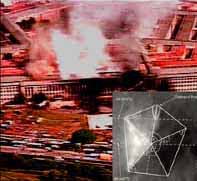 The 'Face', as revealed/confirmed in 2001, is of dual nature, having a hominid side and a leonine side, just as does the Sphinx (= sun, Hercules, 'Fisher King') which has a body of the lion and a head of man. (The connection between the two is corroborated by the fact that the tangent of Cydonia's latitude equals the cosine of the latitude of Giza/Sphinx, both equaling e/pi.) The partially collapsed 'D&M Pyramid', on the other hand, is pentagonal -- echoed by the U.S. Pentagon partially destroyed in the 9/11 attacks. The 'Face', as revealed/confirmed in 2001, is of dual nature, having a hominid side and a leonine side, just as does the Sphinx (= sun, Hercules, 'Fisher King') which has a body of the lion and a head of man. (The connection between the two is corroborated by the fact that the tangent of Cydonia's latitude equals the cosine of the latitude of Giza/Sphinx, both equaling e/pi.) The partially collapsed 'D&M Pyramid', on the other hand, is pentagonal -- echoed by the U.S. Pentagon partially destroyed in the 9/11 attacks.
Line 4, 'When one will want to have proof of the [Vikings]', then, would have the implication of people wanting to know the truth about Cydonia and/or more generally about the existence of life on Mars. And, sure enough, presently around the turn of the millennium we are rapidly getting more evidence indicative of the existence of past/present life, as well as intelligently designed structures, on the Red Planet. (Most recently, the Mars Odyssey spacecraft gave us, on 3/1/02, more evidence of water on Mars, more pictures of strikingly artificial-looking features, and amazing confirmation of Richard Hoagland's 'Mars Tidal Model' which I consider a brilliant piece of work.)
As it turns out, the 'Norman/Viking' reference also nicely brings together 9/11 and 'Rex Deus' as we learn that the Viking leader, Rollo (Hrolf), came to France and obtained Normandy (becoming the first Duke of Normandy) in _911_ AD. And Rollo, interestingly enough, was genealogically linked to the 'Rex Deus' clan:
[Rollo] extended his lands by conquest and his influence by alliance and marriage with the leading aristocratic families of the time. He sought to establish strong bonds with the local aristocracy and, in particular, matrimonial links with dynasties of the Rex Deus tradition, such as the families of Chaumont, Gisors, d'Evreaux, Blois, the Counts of Champagne and the ruling House of Flanders, whose younger sons were the Counts of Boulogne. Was he [Rollo himself] also Rex Deux, from a family outside the confines of early Christian Europe? (Hopkins, et al, Rex Deus, p.107)
From this angle, the phrase 'When one will want to have proof of the Normans' would come to mean 'when people become aware, and want proof/'resurrection', of 'Rex Deus' or the 'Grail'/messianic bloodline -- that is, our own time.
Now, the 'resurrection' of this hidden bloodline/tradition would also imply the fall of the Church as its existence today is the result of the Roman Empire 'hijacking' the 'Fisher King' tradition. The Catholic Church or Papacy, in other words, is just a poser on the throne with no legitimacy what so ever. The 'king' is naked and the people have been too conditioned and timid to openly acknowledge this awkward fact. When the true 'Fisher King' is publicly acknowledged, therefore, it would automatically leave the Church and its manipulative doctrine nowhere to go but down. This situation brings us back to Quatrain II-41, the 'two suns' prophecy already applied to the current events, the last line of which indicates the fall/shift of the papacy: "When the great pontiff changes his abode."
In The Labour of the Sun was discussed how Quatrain II-41 pertains to 9/11, the 'King of terror' (Fisher King), and the inevitable end of the reign of Pope John Paul II, the 'Labor of the Sun' pope, in the near future. Since writing the article, it came to my attention that there is one particular date that may be seen as a window through which the smoldering archetypal story line could potentially manifest itself physically because of intense symbolic convergence. The date in question is May 1st -- i.e. 'May Day'. First, notice that just as the date '9-11' numerically had the implication of emergency ('911' being the emergency phone number), 'May Day' is similarly the international radiotelephone code used for indicating trouble and requesting help. Second, in Europe May Day is Labor Day which in the United States is celebrated in September (the month of 9/11) -- 'labor' being a code word for Pope JPII, as well as Hercules' 11th Labor that has been found to closely relate to 9/11 and Prometheus along with his fire and ring. May Day, in fact, is also the festival of Belenus, the Celtic god of fire and the sun, and a pagan festival of rebirth and renewal. The first day of May, therefore, is a time with strong 9/11 resonance and particularly relevant to the 'Labor of the Sun', i.e. Pope JPII, though I am not ready to predict that the papacy will actually suffer a loss on that date.
Update: According US intelligence sources, as reported by The Washington Times (May 13), Islamic terrorists were planning to attack a nuclear power plant and this "was initially scheduled for May 1..." So, there indeed was a high potential for a 9/11-related major incident on May Day 2002.
Echoes of Lost Paradise
Dinosaurs, the kings of the earth at the time, were suddenly wiped out about 65 million years ago. Rocks from outer space, it is often theorized, hit the earth and devastated all life upon the surface. Quite recently, Tom Van Flandern (formerly the Chief of the Celestial Mechanics Branch of the U.S. Naval Observatory) put forward the theory that it was the 'explosion' of what he calls 'Planet V' between Earth's orbit and the Asteroid Belt (which is the remnant of the theoretical 'Planet K' that exploded about 250 million years ago) that caused the extinction of the dinosaurs. The planet Mars, in this radical model, was formerly a satellite of Planet V that survived the catastrophe and became an independent planet. Richard Hoagland's more recent 'Mars Tidal Model' was an extension of Flandern's 'Exploded Planet Hypothesis', and so the new data from the Mars Odyssey probe just released 3/1/02 that dramatically corroborated Hoagland's theory was also confirmatory evidence for Flandern's. By inference, then, it may be postulated that those dinosaurs -- analogous to the 'King of terror', 'Fisher King', etc. -- and the Red Planet have an inseparable historical connection.
The reader may recall that I have previously stressed the intense correlation that exists between the 9/11-related events and the destruction of the antediluvian world, 'Atlantis', in connection with Mars/Cydonia. Here, then, we have the implication that there also is a link between the prehistoric 'dragons' and Atlantis. Remarkably, this strange association actually resonates well with the fact that in ancient traditions the angelic wisdom-providers of the antediluvian paradise, including Osiris, are usually associated with the serpent, i.e. 'dragons'. The coherence is intensified when it is added that the essence of Osiris was equated in ancient Egyptian theology with the Benben Stone (the capstone of the pyramid/obelisk) which in turn was, or represented, a meteorite -- i.e. a rock from outer space (Planet V). Correspondingly, we may recall that, in Mystery, Babylon the Great, the antediluvian tower (Babel) and the Osirian 'fallen angels' (Nephilim) were found to be the embodiment of a heavenly stone. And to top it off, the Nephilim were 'fallen ones' (as in fallen meteorites), and were also called awwin denoting 'serpents' (as in dragons/dinosaurs) and gibborim meaning 'strong ones' (as in Davidic 'Fisher Kings'). The messianic association is echoed strongly by the Holy Grail/Blood Royal: in Wolfram von Eschenbach's Parzival from around 1200, the Grail is called lapsit exillis which, as lapis ex caelis, means 'stone from the heavens'!
So we now have entangled themes involving dinosaurs, Exploded Planet Hypothesis, Mars, Atlantis, heavenly stone, messianic tradition... What does this all mean? While I have my own hypotheses, it is wise at this time to just wonder about it rather than force a shortsighted and linearly conceived conclusion out of the partially disjointed pieces of the puzzle. I have faith in the idea of 'if you ask, the answer will come'. This appears to be how the 'game' is played 'down here'. Truth requires patience, and patience here requires unwavering respect for truth.
Foreshadowing
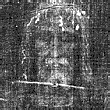 I'd like to end this article by pointing out that the next Winter Olympic Games (2006) will be held in Turin, Italy. Turin is the home of the single most important and controversial relic associated with Jesus -- the Shroud of Turin, the linen cloth in which Jesus was supposedly wrapped after the crucifixion. On the Shroud is seen, somehow, a seemingly photographic image of Jesus. While ostensibly a Christian relic, the Shroud has much to do with the esoteric 'underground' tradition that aligns with the 'Fisher King' rather than with Pauline counterfeit Christianity headed by the Papacy. Indeed, the Shroud first surfaced soon after the suppression of the medieval warrior-monks, the Knights Templar, who were accused, among other things, of worshipping a strange head -- which may well have been the head portion of the Shroud. The first known owner of the relic, Geoffrey de Charney, is in fact thought to be the nephew of Geoffroi de Charney, the Templar preceptor of Normandy who was burned to death with Jacques de Molay, the last Templar Grand Master. And some have theorized, with good reason, that the Shroud was actually created by Leonardo Da Vinci who has been claimed to have been Grand Master of the Priory of Sion, supposedly the parental organization behind the Templar order (see Lynn Picknett, et al, Turin Shroud). The Priory of Sion, extensively discussed in the groundbreaking book Holy Blood, Holy Grail (1982), is practically analogous, or attached, to 'Rex Deus'. This combined with the fact that the Templar knights in the Grail lore are depicted as the guardians of the Holy Grail/Blood Royal which, in theory (based on "heretical" traditions), stemmed from the dynastic 'Sacred Marriage' between Jesus and Mary Magdalene, it may be inferred that the Shroud is in a sense a form of the Grail which in turn represents the hidden messianic succession. I'd like to end this article by pointing out that the next Winter Olympic Games (2006) will be held in Turin, Italy. Turin is the home of the single most important and controversial relic associated with Jesus -- the Shroud of Turin, the linen cloth in which Jesus was supposedly wrapped after the crucifixion. On the Shroud is seen, somehow, a seemingly photographic image of Jesus. While ostensibly a Christian relic, the Shroud has much to do with the esoteric 'underground' tradition that aligns with the 'Fisher King' rather than with Pauline counterfeit Christianity headed by the Papacy. Indeed, the Shroud first surfaced soon after the suppression of the medieval warrior-monks, the Knights Templar, who were accused, among other things, of worshipping a strange head -- which may well have been the head portion of the Shroud. The first known owner of the relic, Geoffrey de Charney, is in fact thought to be the nephew of Geoffroi de Charney, the Templar preceptor of Normandy who was burned to death with Jacques de Molay, the last Templar Grand Master. And some have theorized, with good reason, that the Shroud was actually created by Leonardo Da Vinci who has been claimed to have been Grand Master of the Priory of Sion, supposedly the parental organization behind the Templar order (see Lynn Picknett, et al, Turin Shroud). The Priory of Sion, extensively discussed in the groundbreaking book Holy Blood, Holy Grail (1982), is practically analogous, or attached, to 'Rex Deus'. This combined with the fact that the Templar knights in the Grail lore are depicted as the guardians of the Holy Grail/Blood Royal which, in theory (based on "heretical" traditions), stemmed from the dynastic 'Sacred Marriage' between Jesus and Mary Magdalene, it may be inferred that the Shroud is in a sense a form of the Grail which in turn represents the hidden messianic succession.
Is it just a coincidence that Turin, the very place where this 'Rex Dues' relic rests, has been selected for the next Winter Olympics? Perhaps. But consider the following. Turin is at latitude 45°N. so as to echo the opening line of the 'Olympic/Martian quatrain', VI-97 ('Forty five degrees the sky will burn'). The last line of the same quatrain, 'When they want to have proof of the Normans', may also now denote 'when people want to find out the truth about the origin of Christianity, about the suppressed messianic legacy, and about the true nature of the Turin Shroud which was first possessed, as far as we know, by the 'Normans' (i.e. the Templar Master of Normandy). The Shroud even resonates with 9/11. The relic, as well as Leonardo/Priory of Sion, is associated with John the Baptist as it is, for example, kept at the Cathedral of St. John the Baptist in Turin. And the saint's birthday was celebrated on the summer solstice just as the date 9/11 corresponded in the early Christian times to the original summer solstice day of the ancient Egyptian calendar.
Also, the demonstrated Martian/Cydonian nature of Quatrain VI-97 incites the thought that the head imprinted on the Shroud might relate to the more or less similar-looking 'Face on Mars'. This is clearly a silly notion -- except there are various clues that are supportive of it. This leads into an area that overlaps my 'other' research that I do not want to discuss yet. But I'll just mention two curious coincidences: the Shroud is called sydoine/sindone/sindon in other languages ('Cydonia' anyone?), and John the Baptist was decapitated and his severed head became an object/idea of great esoteric importance. This is only a small hint. I don't want to open Pandora's Box yet... :) But I will say that Mars/Cydonia anomalies and the Grail-Ark-Shroud-Fisher King theme are to merge in a startlingly direct and elegant way.
The Quest for the Grail is an interplanetary saga.
[Back to main page]
|
|
|
|
|
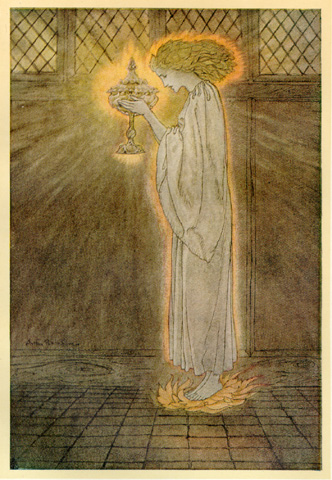 SangrealDagda's cauldron was one of the greatest gifts of the Tuatha DanannNo company ever went away from it unsatisfied.Ceridwen was an enchantress and from the Cauldron we got the great TaliesinArthurs chalice of Jesus which collected the Holy Blood brought back by Joseph Arithemaor is it the Vesica Piscis SangrealDagda's cauldron was one of the greatest gifts of the Tuatha DanannNo company ever went away from it unsatisfied.Ceridwen was an enchantress and from the Cauldron we got the great TaliesinArthurs chalice of Jesus which collected the Holy Blood brought back by Joseph Arithemaor is it the Vesica Piscis Shekinah where is she? what is sheMany Knights are looking to be her championWhat do I think it is one of the greatest gifts of God to man?DNA 8 Shekinah where is she? what is sheMany Knights are looking to be her championWhat do I think it is one of the greatest gifts of God to man?DNA 8
_________________
Everything is Connected and there are no
coincidences |
|
|
|
|
EL REY ARTURO
Según explica una leyenda celta, allá por el 700, Arturo, al nacer, fue separado de su padre, Uter Pendragon, rey de los britanos. Años más tarde, durante un torneo, Arturo arranca de forma casual una espada misteriosamente clavada en un yunque. Así, había
realizado la prueba que sólo podía superar quien estuviera destinado a ser el rey de Inglaterra. Después de vencer a algunos caballeros que no aceptaban su mandato, es coronado rey. Se instala en Camelot y se casa con la bella Ginebra. A lo largo de toda su vida es aconsejado sabiamente por el mago Merlín. También recibe la ayuda de la misteriosa Dama del Lago, que le da una espada mágica, Excalibur. Este gran rey fundó la orden de los caballeros de la tabla redonda y gobernó Inglaterra con justicia y honor. Sus hazañas han quedado reflejadas en numerosos poemas y relatos.
MERLIN
Merlín fue un mago muy poderoso que influyó decisivamente en el rey Arturo. Lo educó desde pequeño y le ayudó a superar la prueba de la espada.
Cuando Arturo fue coronado rey, nombró a Merlín su consejero; éste le sugirió que formase la tabla redonda e intervino con sus poderes en la creación de Camelot.
Pero el final del mago fue muy triste. Se enamora de Viviana, la Dama del Lago y, tomándola como discípula, le transmite todos sus conocimientos de magia. La Dama utiliza estos poderes contra Merlín y lo encierra en una tumba cubierta por una gran losa, de la que jamás podrá salir.
Al igual que el rey Arturo, el mago Merlín también se ha convertido en un personaje muy popular que aparece en numerosos relatos y películas.
LA LEYENDA SIR PERCEVAL
Cuenta la leyenda que Sir Perceval es criado por su madre en una región desierta con la esperanza de evitar que su hijo se una a la caballería andante y muera en combate, como le sucedió a su esposo. Pero su plan no da resultado y Perceval confunde a unos caballeros (Galván, Urién e Yvaín) con ángeles y se une a ellos. Tras un largo viaje llega a la Corte del rey Arturo donde un caballero rojo ofende a Ginebra, la reina, y desafía a cualquier caballero a cambio de las tierras de Arturo. Perceval, ansioso por conseguir las armaduras rojas del caballero, decide combatir con él y finalmente lo vence.
Pasadas varias aventuras, Perceval llega al Castillo del Grial donde lo recibe el Rey Pescador. Este personaje es en realidad su tío y ha sido herido por sus pecados con una lanza. Mientras todos se encontra ban en la gran sala del castillo se celebra una peque ña procesión de pajes y doncellas que llevaban los cuatro objetos sagrados: La Espada, La Lanza, La Bandeja de Plata, y el Grial.
Perceval, siguiendo los consejos de los caballeros que lo entrenaron, no hace ninguna pregunta al respecto aunque la curiosidad se lo estaba sugiriendo. De esta forma, Perceval se retiró a dormir, pero al despertar por la mañana encontró que el castillo estaba completamente vacío. De modo que se vistió la armadura y partió. En el Bosque se encuentra con su hermana de leche quién le notifica que su madre había muerto de tristeza cuando él la abandonó al dejar su hogar y seguir a los caballeros. La muchacha lo llama "el desdichado" porque de haber hecho la pregunta correspondiente en el castillo el Páramo de la Tierra se hubiese convertido en el Paraíso que una vez fue y el Rey Pescador sanaría.
Tras numerosas aventuras, algunas con la compañía de Galván (Gawain), Perceval logra vencer a las nue ve brujas de Caer Loyw, las hechiceras que enseñaron al joven el manejo de las armas. En el instante que las vence la "Soberanía se restaura y el Páramo acaba".
Perceval remedia de esta forma el error que cometió al no hacer las preguntas necesarias en el Castillo del Grial.... Épocas Oscuras sucederán a Edades de Oro". |
|
|
|
|
¿PORQUE LA INDEPENDENCIA EN FILADELFIA EN LOS EEUU? NEXO CON WASHINGTON D.C / COLUMBIA / MARYLAND / VIRGINIA / CIUDAD DE 7 COLINAS
- Is Washington DC the City of 7 Hills, the Endtimes Babylon City?
- Revelation 17 (New King James Version)
9 “Here is the mind which has wisdom: The seven heads are seven mountains on which the woman sits. ….
15 Then he said to me, “The waters which you saw, where the harlot sits, are peoples, multitudes, nations, and tongues. …
18 And the woman whom you saw is that great city which reigns over the kings of the earth.”
-
- Could Washington DC be the endtimes Mystery Babylon city? It is possible. Some Christians are pretty dogmatic that it must be Rome (the city of 7 hills). I am not. Don’t get me wrong, it could be Rome. I just don’t think that it must 100% be so! I actually do not think this issue is very important. It will be a city much like Rome in Apostle John’s time that ruled over the entire world.
-
- There are some evidence that Washington DC is build on 7 hills.
-
There is another “city of seven hills”, it’s called Washington D.C!
by heavensclimb.blogspot.com
There is another “city of seven hills”, it’s called Washington D.C. Here is a brief excerpt from an article on it:
-
“Washington D.C.’s original name was Rome, Maryland, and a branch of the Potomac River was called Tiber Creek, which was named after the Tiber river in Rome. Like Rome, Washington D.C. has 7 hills, whose names are: 1. Capitol Hill, 2. Meridian Hill, 3. Floral Hills,4. Forest Hills, 5. Hillbrook, 6. Hillcrest, and 7. Knox Hill.”
-
Washington DC – Is this the city of seven hills that will be destroyed?
by http://gnosticwarrior.com/
It is well known that the city of Rome was built on seven hills or mountains, but did you know that Washington DC was also has seven hills? Yes, Washington D.C. really does have seven hills:
-
1. Capitol Hill
2. Meridian Hill
3. Floral Hills
4. Forest Hills
5. Hillbrook
6. Hillcrest
7. Knox Hill
-
In biblical prophecy, at the end of which the city of seven hills will be destroyed. Will this city be Rome or Washington?
-
- It is pretty much a historical fact that Washington DC is a twin city of the Vatican city and built/designed largely by Freemasons. It is not a Christian city but built according to occult, Greek and Egyptian designs. Historically, it was also known as Rome.
-
Francis Pope, Original Landowner of Washington, DC aka Rome!
by Barbara Price, http://genforum.genealogy.com/
I have done extensive research on the beginnings of Washington, DC as my Burnes family owned much of the old downtown are of present-day Washington, DC. While conducting this research, I came across Francis Pope, one of the original owners of the land that became Washington, DC. Not only are we connected in that way, but Francis’s wife, Margaret Porter, is probably the sister of another ancestor, Johanna Porter, the second wife of John Neville, who came to America on The Ark and The Dove. Below is from, “Original Patentees of Land at Washington,” by Bessie Wilmarth Gahn:
-
“No. 7. Francis Pope, owner of “Rome” on the Tyber, June 5, 1663.
….
… actually are convinced that Pope’s “Rome” was on the site where our Nation’s Capital Building now stands. …. we understand why the name “Rome” faded away from the area of the National Capital in so complete a manner …
-
The Catholic Encyclopedia: Daniel Carroll
.. Daniel Carroll was named with Thomas Johnson and David Stuart as his associates. The choice of the present site of Washington was advocated by Carroll … The capitol was built on the land transferred to the Government by Carroll. And there is additional interest to Catholics in the fact that, in 1663, this whole section of country belonged to a man named Pope, who called it Rome.
….
The Jesuit Bishop John Carroll was probably the richest man in America in the late 1700’s. Carroll allowed funding to construct D.C. (which is nicknamed “Rome on the Potomac”). The owner of the land used to be Francis Pope and his priest was Jesuit Andrew White (White House).
….
Washington D.C.’s original name was Rome, Maryland, and a branch of the Potomac River was called Tiber Creek, which was named after the Tiber river in Rome. Like Rome, Washington D.C. has 7 hills, whose names are: Capitol Hill, Meridian Hill, Floral Hills, Forest Hills, Hillbrook, Hillcrest, and Knox Hill.
|
|
|
|
|
LOS TEMPLARIOS : LA MESA REDONDA del REY ARTURO
De: 1575Monje (Mensaje original) Enviado: 20/01/2008 06:19 p.m.
https://groups.google.com/group/secreto-masonico/browse_thread/thread/b67efeb581d74fae/3ae3460a42539b63?lnk=gst&q=rey+arturo+#3ae3460a42539b63
Según la tradición, Arturo, cuando un muchacho de quince, fue coronado
Rey de Gran Bretaña, en el d.J.C. 516. Pronto después de su ascensión
al trono él fundó la Orden de los Caballeros de la Mesa Redonda en
Windsor. A partir de entonces los Caballeros se encontraron anualmente
en Carleon, Winchester, o en Camelot, celebrar el Pentecostés. De
todas las partes de Europa vino el valiente y la admisión valiente,
que busca en esta orden noble del título de caballero británico. La
nobleza, la virtud, y el valor eran sus exigencias, y aquellos
poseyendo estas calidades a un grado marcado fueron bienvenidos el
tribunal del Rey Arturo en Camelot. Habiendo juntado a los Caballeros
más valientes y nobles de Europa sobre él, el Rey Arturo eligió
veinticuatro a quién exalto a todo los demás en audaz e integridad y
formaron de ellos su Círculo de la Mesa Redonda. Según la leyenda,
cada uno de estos Caballeros era tan grande en dignidad y poder que
ninguno podría ocupar un asiento más exaltado que el otro, tan cuando
ellos se juntaron en la mesa para celebrar el aniversario de su
fundación era necesario usar una mesa redonda que todos podrían ocupar
sillas de la importancia igual. Mientras es probable que la Orden de
la Mesa Redonda tuviera sus rituales distintivos y símbolos, el
conocimiento de ellos no ha sobrevivido los años. Elias Ashmole, en su
volumen en la Orden de la Liga, insertó un plato de doble página
mostrando a la insignia de todas las órdenes del título de caballero,
el bloque puesto aparte para el símbolo de la Mesa Redonda dejada en
blanco. La razón principal de la pérdida del simbolismo de la Mesa
Redonda era la muerte inoportuna del Rey Arturo sobre el campo de
Kamblan (d.J.C. 542) en el año cuarenta y uno de su vida. Mientras él
destruyó a su enemigo amargo, Mordred, en esta batalla famosa, esto lo
echó no sólo su propia vida, pero las vidas de casi todos sus
Caballeros de la Mesa Redonda, que murieron defendiendo a su
comandante. Dentro del siglo pasado varios libros han sido publicados
para complementar las descripciones pobres en los Evangelios de Jesús
y Su ministerio. En algunos casos estas narrativas reclaman para ser
fundado sobre manuscritos tempranos recientemente descubiertos; en
otros, sobre revelación espiritual directa. Algunas de estas
escrituras son muy plausibles, mientras los otros son increíbles. Hay
rumores persistentes que Jesús visitó y estudió tanto en Grecia como
en India, y que una moneda golpeada en Su honor en India durante el
primer siglo ha sido descubierta. Se conoce que archivos cristianos
primitivos existen en Tíbet, y los monjes de un monasterio budista en
Ceilán todavía conservan un registro que indica que Jesús moró con
ellos y se hizo familiarizado con su filosofía. Aunque el cristianismo
primitivo muestre cada pruebas de la influencia Oriental, este es un
sujeto del que la iglesia moderna rehusa hablar. Si es establecido
alguna vez sin duda que Jesús era iniciado de los Misterios griegos o
Asiáticos paganos, el efecto sobre los miembros más conservadores de
la fe cristiana probablemente será catastrófico. ¿Si Jesús fuera Dios
encarnan, como los consejos solemnes de la iglesia descubierta, por
qué es mandado Él a en el Nuevo Testamento como "llamado de Dios un
remilgado alto después de la orden de Melquisedec"? Las palabras
"después de la orden" hacen Jesús una de una línea o orden de la cual
deben haber habido otros de la dignidad igual o aún superior. Si los
"Melchizedeks" fueran las reglas divinas o sacerdotales de las
naciones de la tierra antes de la inauguración del sistema de reglas
temporales, entonces las declaraciones atribuidas a San Pablo
indicarían que Jesús era uno de éstos "filosófico electo" o intentaba
restablecer su sistema del gobierno. Se recordará que Melquisedec
también realizó la misma ceremonia de la bebida de vino y la rotura
del pan como hizo a Jesús en la Última Cena. George Faber declara que
el nombre original de Jesús era Jescua Hammassiah. Godfrey Higgins ha
descubierto dos referencias, un en el Midrashjoholeth y otro en el
Abodazara (comentarios judíos tempranos contra las Escrituras), en el
sentido de que el apellido de la familia Joseph era la Pantera, ya que
con ambos de estos trabajos es declarado que un hombre fue curado "en
nombre de Jesús ben Pantera." Pantera de nombre establece una unión
directa entre Jesús y Baco - quién fue cuidado por panteras y es a
veces representado montando en uno de estos animales o en un carro
dibujado por ellos. La piel de la pantera era también sagrada en
seguro de ceremoniales iniciador egipcio. El monograma IHS, ahora
interpretado para significar a Iesus Hominum Salvator (el Salvador de
Jesús de Hombres), es otro eslabón directo entre Cristianos y los
ritos Baquicos. IHS es sacado del griego υησ, que, cuando su valor
numérico (608) se significa, es emblemático el sol y constituyó el
nombre sagrado y oculto de Baco. (Ver los Druidas celtas por Godfrey
Higgins. ¿) la pregunta se levanta, Era el cristianismo romano
primitivo aturdido con la adoración de Baco debido a numeroso
paralelismos en la dos fe? Si el afirmativo puede ser probado, muchos
los enigmas hasta ahora incomprensibles del Nuevo Testamento serán
solucionados. Es de ningún modo improbable que Jesús Él mismo al
principio expuso como alegorías las actividades cósmicas que eran la
estafa posterior fundida con Su propia vida. Que el χριστός, Christos,
representa la energía solar venerada por cada nación de antigüedad no
puede ser contradicho. Si Jesús revelara la naturaleza y el objetivo
de esta energía solar bajo el nombre y la personalidad de Christos,
así dando a este poder abstracto los atributos de un hombre-Dios, Él,
pero siguiera un precedente puesto de todos los Instructores mundiales
anteriores. Este hombre-Dios, así dotado con todas las calidades de la
Deidad, significa la divinidad latente en cada hombre. El hombre
mortal consigue la deificación sólo por la expiación con este divino
Ser. La unión con el inmortal Ser constituye la inmortalidad, y él que
encuentra que su verdadero Ser es por lo tanto "salvado". Este
Christos, o hombre divino en el hombre, son la verdadera esperanza del
hombre de la salvación - el Mediador vivo entre Deidad abstracta y
especie humana mortal. Como Atys, Adonis, Bacchus, y Orpheus en toda
la probabilidad fueron al principio iluminados hombres que más tarde
fueron aturdidos con los personajes simbólicos a quien ellos crearon
como personificaciones de este poder divino, entonces Jesús ha sido
aturdido con el Christos, o hombre-Dios, cuyas maravillas Él predicó.
Ya que el Christos era el hombre-Dios encarcelado en cada criatura,
esto era el primer deber de iniciado de liberar, "o resucitar", este
Eterno dentro de él. Él que alcanzó el reencuentro con su Christos fue
por consiguiente llamado al Cristiano, o el Bautizado, el hombre. Una
de las doctrinas más profundas de los filósofos paganos concirnió a
Dios-salvador Universal que levantó las almas de hombres regenerados
al cielo por Su propia naturaleza. Este concepto era
incuestionablemente la inspiración para las palabras atribuidas a
Jesús: "soy el camino, la verdad, y la vida: ningún hombre llega al
Padre solo por mí." En un esfuerzo para hacer a una persona sola de
Jesús y Su Christos, los escritores cristianos han remendado juntos
una doctrina que debe ser resuelta atrás en sus componentes originales
si el sentido verdadero del cristianismo debe ser descubierto de
nuevo. En las narrativas de Evangelio el Christos representa al hombre
perfecto que, habiendo pasado por varias etapas "del Misterio Mundial"
simbolizado antes de los treinta y tres años, sube a la esfera de
cielo donde él es reunido con su Padre Eterno. La historia de Jesús
como ahora conservado es - como la historia Masónica de Hiram Abiff -
la parte de un ritualismo iniciador secreto que pertenece a los
Misterios cristianos y paganos tempranos. Durante los siglos sólo
antes de Era Cristiana, los secretos de los Misterios paganos se
habían caído gradualmente en las manos de los profano. Al estudiante
de la religión relativa es evidente que estos secretos, juntados por
un pequeño grupo de filósofos fieles y místicos, fueron vestidos de
nuevo de nuevas ropa simbólicas y así conservados durante varios
siglos bajo el nombre del cristianismo Místico. Se supone generalmente
que los Esenios eran los guardianes de este conocimiento y también los
iniciadores y los educadores de Jesús. De ser así, Jesús fue
indudablemente iniciado en el mismo templo de Melquisedec donde
Pitágoras había estudiado seis siglos antes. Los Esenios - las más
prominentes de las sectas sirias primeras - eran una orden de hombres
piadosos y mujeres que vivieron vidas del ascetismo, gastando sus días
en el trabajo simple y sus tardes en el rezo. Josephus, el gran
historiador judío, habla de ellos en los términos más altos. "Ellos
enseñan la inmortalidad del alma," dice él, "y la estima que las
recompensas de honradez deben ser seriamente esforzadas para." En otro
lugar él añade, "Aún es su curso de la vida mejor que aquel de otros
hombres y ellos completamente envician de ellos a la agricultura." Se
cree que el nombre se supone que Essenes es sacado de una palabra
siria antigua que significa "al médico", y éstos amablemente gente ha
sostenido como su objetivo de la existencia la curación del enfermo en
mente, alma, y cuerpo. Según Edouard Schuré, ellos tenían dos
comunidades principales, o centros, un en Egipto en los bancos de
maoríes de Lago, otro en Palestina en Engaddi, cerca del Mar Muerto.
Algunas autoridades remontan el Esenio atrás a las escuelas de Samuel
el Profeta, pero el más convienen en origen egipcio o en Oriental. Sus
métodos de oración, meditación, y ayuno no eran a diferencia de
aquellos de los hombres santos del Oriente Lejano. El ingreso en la
Orden de Esenia era posible sólo después de un año de período de
prueba. Esta escuela de Misterio, como tantos otros, tenía tres
grados, y sólo unos candidatos pasados con éxito por todos. Los
Esenios fueron divididos en dos comunidades distintas, un consistiendo
en célibes y los otros de miembros que estuvieron casados. Los Esenios
nunca se hicieron comerciantes o formaron la vida comercial de
ciudades, pero se mantuvo por la agricultura y el levantamiento de
ovejas para la lana; también por tales artes como cerámica y
carpintería. En los Evangelios y Libros apócrifos de la Biblia,
Joseph, el padre de Jesús, se menciona tanto como carpintero como como
un alfarero. En el Evangelio Apocrifico de Tomas y también aquel de
Pseudo-Mateo, el niño Jesús es descrito como el creador de gorriones
de la arcilla que cobró vida y se fue volando cuando él aplaudió sus
manos. Los Esenios fueron considerados como entre la clase mejor culta
de los Judíos y hay cuentas del que han sido elegidos como tutores
para los niños de oficiales romanos colocados en Siria. El hecho que
tantos artesanos fueron puestos en una lista entre su número es
responsable del que la orden es considerada como un progenitor de la
Francmasonería moderna. Los símbolos de los Esenios incluyen los
instrumentos de varios constructores, y ellos fueron en secreto
contratados
Fraternalmente Vicente Alcoseri Moderador del Foro Secreto Masónico
http://groups.google.com/group/secreto-masonico |
|
|
|
|
Un yanqui en la corte del rey Arturo
De Wikipedia, la enciclopedia libre
Un yanqui en la corte del Rey Arturo (A Connecticut yankee in King Arthur's court) es una obra literaria del escritor estadounidense Mark Twain que enmarca ideas religioso-políticas y conocimientos tecnológicos de la época del autor en una ficción caballeresca satírica. Al intervenir en una pelea y tras sufrir un golpe en la cabeza, el yanqui de Twain, Hank Morgan, es transportado hacia atrás en el tiempo llevando consigo todo el conocimiento tecnológico del siglo XIX y su ideología republicana y protestante.
Cuenta la historia de un norteamericano del siglo XIX que en circunstancias increíbles, menciona la 'transposición' de cuerpos, viaja a través del tiempo y va a parar al mítico siglo VI inglés que se describe en los libros de las leyendas artúricas.
Hank es condenado a morir en la hoguera. Sin embargo, y al coincidir el momento de su ejecución con un eclipse de sol, se salva amenazando con no dejar llegar la luz del sol y sumir al pueblo en las tinieblas. Al creerle en posesión de asombrosas facultades mágicas, el rey Arturo lo deja libre y lo nombra ministro suyo. Más adelante, será el pueblo mismo, y tras alguno de sus 'mágicos' logros, el que le conceda el título de Jefe que Hank llevará con orgullo.
Hank no comprende qué sucede en un primer instante, pero en seguida se adapta, y haciéndose cargo de la situación, empieza a utilizar sus conocimientos para crear el contexto social y las instituciones que él considera necesarias para convertir esa Inglaterra medieval en un país del siglo XIX.
Enlaces externos[editar]

albawaba.com
Tom Hank's upcoming film "The
2000 × 1340 - 922k - jpg |

celebritycarsblog.com
Latest Posts About Tom Hanks
245 × 290 - 17k - jpg |

twitter.com
tom hank (nice)
400 × 400 - 29k - jpeg |

usmagazine.com
Tom Hanks
290 × 402 - 41k - jpg |

gossipmagazines.net
Tom Hanks Pictures
417 × 600 - 53k - jpg |

celebrityfitnesstraini...
Tom Hanks Diet
1280 × 1024 - 127k - jpg |

es.doblaje.wikia.com
Tom Hanks
376 × 490 - 48k |

indialive.today
Tom-Hanks-8
1022 × 1200 - 220k - jpg |
ARTURO TIENE FUERTE RELACION CON WASHINGTON D.C EN UN CONTEXTO ASTRONOMICO. ¿PORQUE JUSTO EINSTEIN SE BASO EN FUNCION A VIRGO LA EFECTIVIDAD DE LA LEY DE LA RELATIVIDAD?
|
|
|
|
|
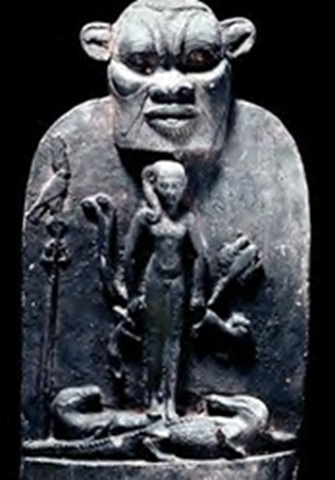
There have been many books and television shows about how the Great Pyramids were built. Let us start with those theories on how to build the pyramid the hard way: Most of those theories used ramps of some kind.1 Though on the late night talk shows some guests say the lifting of the stone was done by space aliens, other theories say the lifting was done by Giant Cone headed men that hummed them into place, still others say the lifting was done by good or bad Angels. My favorite failed theory was airlifting the stones. We will talk about that theory but even that system was far too slow.
The Long Ramp Theory
The mainstream theories of the Egyptologist use ramps. The most common is the long ramp. The theory goes: that the slaves could not push a huge block of stone up a gradient of more than (ten to one) ten feet of horizontal movement2 to one-foot vertical movement. To build the Pyramid to the projected height of 480 feet tall with ramps, you would need a ramp four thousand, eight hundred feet long of material that is very hard and smooth. (Have you ever tried to push a car in sand?). The volume of materials that would be needed would be more than EIGHT MILLION CUBIC YARDS3. Nevertheless, some construction engineers say to lift all those stones; it would take FOUR of those ramps4 which would be more than THIRTY TWO-MILLION cubic yards of materials5. The Great Pyramid itself only has a little more than two-point eight million cubic yards of materials. But where did all the materials6 go that were used to build those ramps after the construction was finished?

Spiral Ramp Theory
Former professor, John Blaines of Oxford University developed a spiral ramp theory by which the Egyptians went round and round the pyramid until the stone blocks on log rollers reached the top.7 The problem is that those log rollers do not make tight turns. The blocks would fall off before they could make the turn. Unless the ramps were far beyond the foot print of the structure itself which would take almost as much materials as a straight Long Ramp.

Many Fringe Egyptologist say Edward Leedskalnin knew the secret method used to lift the stones used in the pyramid construction. Sadly, No, Ed used a large compressor and tube type truck tires as lifting bags to air lift the stones for his Corral Castle in Miami, Florida. No magic, sorry, a photo shows an air compressor in the background taken during the construction phase –simple but effective– Nonetheless, Egyptians had a much faster and easier way of moving stones.
Aesop’s Thirsty Dog
In this story, the Dog (the common or unclean) was thirsty. However, the water that he was given by the stork or Egyptian Ibis (Thoth) was in the bottom of a narrow container. Making an easy drink for the Dog impossible, Even so, the Dog solved his problem by placing stones into the container, in so doing raised the water level allowing him to drink. That problem of thirst and the solution of placing stones into a water source is the “Key Stone” to understanding the Egyptian process of stacking the stones 450 feet above the valley floor. The Geological records of the river Nile basin and the world wide sea level records (see charts8), tell us that in the later portion of the Pleistocene Epoch Earth was in a time of Great Drought. Even so, at that time of drought, (12,500 to 13,500 years ago) the Nile river level suddenly rose by hundreds of feet, an event that turned the Nile River Valley and delta into a fruitful place for man in a time the rest of the world was in a Great Drought. Then almost as suddenly eight thousand years later about 2141 years before the Christian era began the river levels dropped about the same amount.
9
The Geological Record of Egypt

Great Pyramids were constructed about 13,000 years ago
The Gatekeepers of knowledge will not consider the evidence that the three Great Pyramids were constructed about 13,000 years ago at the end of the Pleistocene Epoch. To have that date verified would foul up their carefully crafted “Traditions” of the development of Civilization. Verifying that there was a civilization that far advanced would cause “The Traditions” of countless Scholars to go up in “Smoke.”

Even so, there is evidence of just that construction date. The Book of Job places the Great Pyramid construction in a time when Polaris was a seasonal star of early summer, not a Pole star as it is today. Polaris only becomes a seasonal star when the Progressions of the Equinoxes moves that star below the Northern Horizon Circle. That only happens to Polaris once every 26,000 years and then only for a few years, and the last time Polaris was under the Northern Horizon Circle was 12,000 to 13,000 years ago, A time that matches the astronomer, Robert Bauva’s10 alignment of three Great Pyramids with the three stars of Orion’s Belt. Bauva determined that the three Great pyramids have the same relationship in size ratio and placement as the three stars in the Belt of Orion as they were seen from earth 12,450 years ago.11 Even the colors of those stars match the three Great Pyramids, white, red and white.

This one shall comfort us concerning our work and the toil of our hands
These pieces of “seemingly implausible” evidence have been rejected by the Gate Keeper of History; nevertheless, the “Spinner of Time” has locked those pieces of silk threads into place with geological records of The Nile River Valley. Geological records show the Nile River level rising hundreds of feet during a time of World Wide Drought12, a river level rise that has NO NATURAL reason to rise during a time of regional drought.
About that time (13,000 years ago) a man named Lemech who had a son and when he was born Lemech said of his son:
“This one shall comfort us concerning our work and the toil of our hands, because of the ground which the lord has cursed.”13
The son of Lemech went by many Names: Gilgamesh called him Utnapishtim,14 The Aztecs called him Coxcoxtli15, the Central Americans called him Tezcatil16, To the Brahmans he had the name Manu17. This man also authored most of the book now known as the Book of Enoch, because portions of his book were incorporated into the Book of Enoch over the centuries.

All the same, we must first deal with another member of “the family”; Great-Great-Great Grandpa Khunm (Khain) Khufu. The name Khufu meant in the ancient Semitic tongue, “to cover up.18” And in Greek, Cheops means, a well-watered garden19. Khufu built the Great Pyramid and controlled the annual flooding of the Nile River. Now how did he do his amazing feats of engineering, like controlling the flooding of the Nile? The same way the Egyptians control the annually flooding now: with an irrigation dam of course. As Sherlock Homes would say, “The Game is a foot.” The development of irrigation systems was said to be the one of the biggest factors in the civilization of man. Egypt is the birthplace of that science.20 Along the Nile, irrigation was used and Egypt became known as “Wheat Cakes.” The problem with the Nile is that the river is in flood or drought. That is one of the reasons that the Aswan Dam and Lake Nasser were built, to regulate the flow of the Nile
Plateau or Valley?
The Experts say that, “The Great Pyramid is on a big flat plateau”, giving you pictures of a flat land that looks as if that plateau goes on for hundreds of miles, and that plateau does go on for hundreds of miles. Even so, the River Nile cuts a very deep valley through that plateau. Back in the country where I come from we call that kind of thinking being a “Flat Lander;” or what you might call being a two-dimensional thinker.

The Nile river valley is hundreds of feet deep and in some places eight to twelve miles wide then narrowing to spots like where the Aswan dam is now, and behind that dam is Lake Nasser which is the Second Sea of Nun. This lake is very important in the history of the future.

These narrows in the Nile valley are called cataracts. There is a narrowing just up the river from Cairo and then the Nile River begins its delta. That narrows is a lot wider now than it was ten thousand years ago; although just a few years ago a hydroelectric dam project was canceled at that point. The reason was that dam’s lake would have covered the Great Pyramid.
https://burrodriver.wordpress.com/tag/archimedes/
|
|
|
|
|
Didn’t Herodotus say:
“The Pyramid was twenty years in the building and the Machines to lift the stone were made of wood?

When you go to any common Greek Lexicon, it will say that “machana” is defined as a machine. However, those machines were boats, and if you look at Greek words with similar root forms, you will find they are defined as “ship captains and seamen.”
Why haven’t I heard of this concept before?
Traditional misinterpretation of the evidence, because, these boats were stylized in Egyptian art to look like crocodiles, large barges with segmented blocks that represent the body of a crocodile and two tow boats, bow and stern making the Oars look like swimming legs as they were seen from the lip of the valley, an image that looked like a crocodile.
 
How can a boat lift stone?

The first four Pharaohs solved that problem by building the great dam and their serekh shows that dam’s rising. However, Narmer, the first Pharaoh’s serekh shows his Machana barges symbolized as catfish with only one tow boat. However these crocodile like barges were often rotated 90 degrees and placed on columns of water in many papyrus. Which symbolizes the building of Osiris’ pyramid.
  
Thesecrocodile like barges, were one of the primary Low Tech Tools used to create a large irrigation reservoir, an irrigation project, that was once known as the Sea of Nun; an irrigation project through the creation of a huge dam that quickly turned the Nile river basin from a humble desert kingdom into a world agricultural power. Then that land became known by its Semitic name, Metzrayim, a name that today would be defined as River Dam.
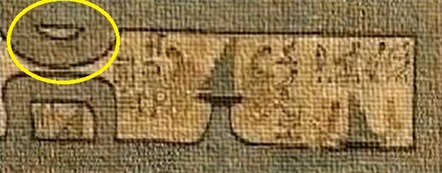
The dam built with thesecrocodile like barges gave added benefits to the Pyramid builders, because, as the dam grew higher the stone masons working on the Pyramid had stone delivered to their level of construction by boat without the need for ramps and thousands of workers.

Where do you get the dating of this dam’s construction?

Books from the Dead Sea Collection speak of the building of the Great Pyramid. When Bootes, Ursa Major and Minor were seasonal constellations, about 13 to 14 thousand years ago, when the level of that irrigation lake,the Sea of Nun rose, behind a dam.
.
Job 28

After that dam’s destruction and the draining of the Sea of Nun; the Great Pyramid rose from those receding waters. This event of draining of the sea of Nun occurred over four thousand years ago and was well documented by a Jewish historian. After that dam’s destruction that nation became known by the Coptic Greek name, Aiguptis, Egypt. Which is derived from aigi, a sea, and ptoe , to cause to flee away.
Isn’t there more evidence than that?
There is also an anomaly in the geological record of the Nile river valley that agrees with the flood building of the Great pyramids. A little over 13 thousand years ago.
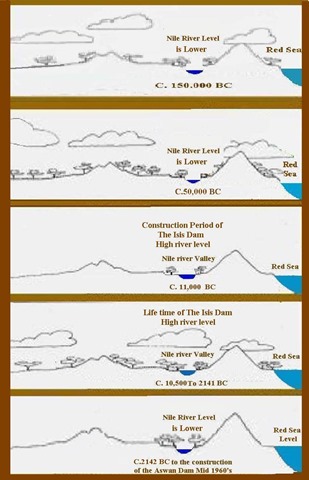
Couldn’t an increase in precipitation cause that rise?
NO! Because Africa was in a one thousand year drought. A drought that was confirmed by the geological records to that same time period, the river Nile rose by hundreds of feet during a Devastating Drought. A rise of the river Nile that had no natural reason to occur.
Sea Level Geological Record

Only a man-made dam at the narrows of Cairo at the island of Roda could account for such a sudden rise of the river Nile. Funny thing is the Egyptians recently considered putting a dam at the narrowing of the Nile near Cairo at the island of Roda:
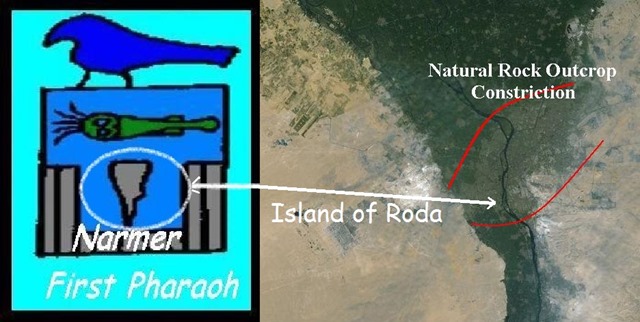
Why, isn’t there a dam there now?
The Egyptians thought better because the water would cover the Pyramids and part of Cairo so they put a dam shaped hotel there.

Theories are a dime a dozen.
The thing is that by using this theory as a template; I have been able to find an impressive amount of historical and scientific evidence to collaborate that concept of the building and revealing of the Great Pyramid and its intended function.
Why hasn’t any one else seen this?

Egyptian mythology was encrypted, here is one of the most beloved story that implies the dam building concept, that of Osiris and Isis, who were deeply in love. However, there was a problem in the kingdom, Osiris’ brother Set, coveted the throne. So Set through deception was able to capture, and then kill Osiris. Set cut our hero into pieces and carefully hid the dismembered pieces in the Nile. Isis was distraught with grief over the loss of her husband and the emptiness of her womb. Consequently, Isis took up the gruesome task of finding Osiris’ missing pieces.

Eventually, Isis located most of the dismembered body. Which she then wrapped in green and black in so doing cocooning her husband.

Because, of Isis’ great devotion and love for Osiris, he was resurrected, A gift to allow the couple to couple? However, Isis had not found all of her husband’s missing pieces; furthermore, that one piece was a very Important Piece, if you wanted children. Somehow Osiris was up to the task and Isis was given a son which she called Horus. A son that would take the part of his father’s Missing Piece?
Isn’t that a little “KINKY” ?
The Egyptians knew that their enemies, the Barbarians loved kinky stories, and that “kinkiness” would help to keep the story told and retold throughout the generations, A stratagem which the Egyptians knew that the barbarians would be unaware of. Let’s start with the common tradition surrounding: Isis, first Isis wears a strange crown, which the common tradition calls a throne, even so, that stair stepped triangle is depicted in many papyri as a dam. Furthermore, the hieroglyphic symbol for Isis implies just that concept.
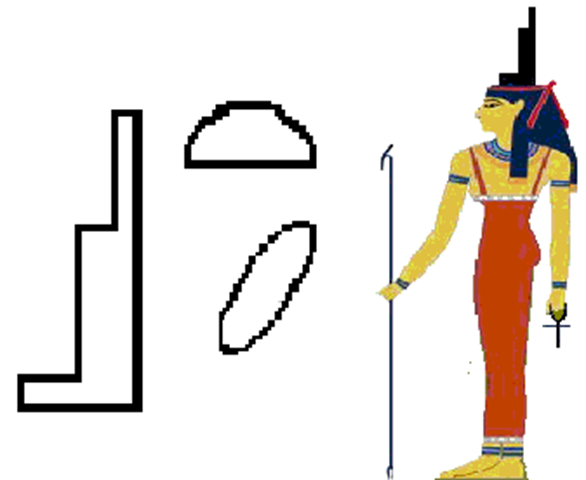
The Glyph for Isis is an oval symbolizing a body of water, above that is a half circle symbolizing rising. Then to the left, a stair step triangle, the dam symbol, the meaning?
Isis, water rising behind a dam.
What do we know about Osiris?

Osiris’ glyph show an eye behind the dam symbol.
Next Osiris was cut into pieces, then those pieces were hidden in the Nile.
What about the mummification of Osiris?
Leave a stone in the Nile and it will soon grow green algae and black slime.
But Osiris was resurrected,
How do you explain that?
Funny thing is many stories of Egypt speak of the Great Pyramid rising out of the Sea. Next Osiris was missing an important piece The Great pyramid is also missing a part its apex.

I don’t get how did Horus
Replace his fathers missing piece?
Pull out a one dollar bill what tops its Pyramid? An Eye, which was One of Horus’ symbol , the Udjat.

Horus replaced the thirty feet of stone work which would have been needed to complete the “Apex” of the great Pyramid.
But what did that Eye symbolize?

The Book of the Dead’s, Coffin text, speaks of Horus as a communication device in the shape of an eye, a golden mirror that flashes sun light as a Morris like code as far as the Horizon.

How does that communication device’s code
Lead us back to
Thoth’s written language system?
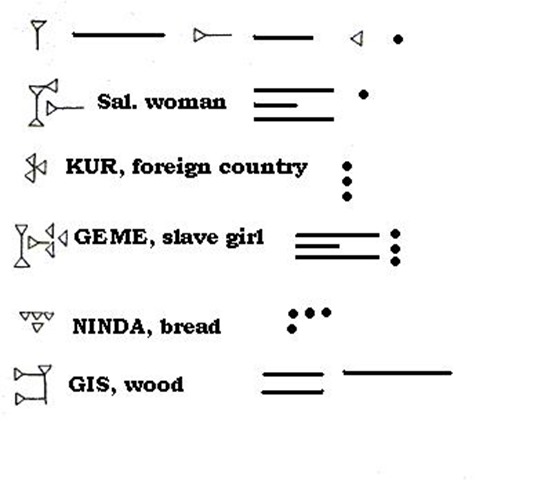
Like cuneiform it was written on soft clay tablets, like the scratching of an Ibis bird, Thoth’s second icon. And just as the Osiris story said! Horus was the completing part of the Pyramid, but not as “kinky” as the common interpretation. This new interpretation of the story of Osiris and family leads us back to the rise of Egypt, KMT and implies a dam was created and the rising of the lake was the means which was used to build the Great Pyramid and the missing apex was intended as a communication hub.

and just like Isis, the water of the rising lake cocooned the outside of the Pyramid with green algae and black slime; until the Great Pyramid rose out of the water of the receding lake.

.
Such a major event why isn’t there
Historical documentation of that event?
There is however, the ancient Egyptians wanted the traditions of the Barbarians to hold sway rather than the Truth. However, Isaiah 19 gives an account of the draining of the Sea of Metzrayim and the arrival of the Jews and their construction of a great city around the great Pyramid called the city of Heliopolis.
Your telling me that
The Jews are connected to the Great Pyramid

Atum was another name for the Pyramid that spoke of itself and its arrival:
“When I, Atum was alone in the waters, in a state of immobility, Before I was found anywhere to stand or sit, Before Heliopolis had been founded that I might be there in.”
If this is true
There must be overwhelming evidence?
Which there is! A book full, here are a few more examples. The historians Josephus, of the first century and a ninth century Arab Masoudi, also confirms that the flooding of the Nile Valley was used in the pyramids construction. Much more can be found in the hard cover book Locked Gates, The Riddle Lords Secrets , by Howard West- available at Amazon.com

|
|
|
|
|
Relativity on the Hudson
Flight 1549, Time Travel & Templar Bigfoot
by Goro (goroadachi.com & supertorchritual.com)
September 14, 2010 *(1/12/ 2010)
A blast from the past...

Flight 1549
'Miracle on the Hudson'...

Jan 15, '09 US Airways Flight 1549 Crashes In Hudson River
Jan 18, '09 Jetliner lifted out of Hudson River
...was a 'time travel' event
reenacting
Planet of the Apes

...with special guest
Abraham Lincoln
- Jan 15: Flight 1549 crash (Planet of the Apes)
- Jan 17: Obama train ride to DC commemorating Lincoln
- Jan 18: Obama concert & speech at Lincoln Memorial
- Jan 20: Obama taking presidential oath on Lincoln's Bible





5-Day Gap
from Hudson Miracle to Obama inauguration expressing
'Time Travel'
via clocks shown in (original)
Planet of the Apes
('POTA')

POTA Time Information:
- Earth Time: ~March 26, 2673 (~Mar 23-27 during scene)
- Ship Time: July 14, 1972
- Estimated departure time: ~Jan 14, 1972 ('6 months' ago)
Reflected in Flight 1549 departure/crash on January 15
- Days elapsed on ship since departure: ~182.5 days
- Days elapsed on Earth since departure: ~256,107 days
We're dealing with two separate time streams here due to time dilation experienced on the spaceship traveling near the speed of light, i.e. time is slowed down on the ship per Einstein's
Special Theory of Relativity.
(This is why the astronauts comes back to a future Earth ruled by 'Bigfoots'.)
Based on the data provided we can calculate the precise time ratio:
- 1 day on POTA ship = ~1403.326 days on earth
- 1 day on earth = ~1.026 minutes on POTA ship

We now apply this to Flight 1549.
The actual flight time data:
- Flight 1549 Departure: ~3:25:30 pm (+/- 30 sec)
- Flight 1549 Crash: ~3:30:30 pm
- Flight duration: ~5 minutes (+/- 30 sec)
Flight 1549 was in the air for approximately:
5 minutes.
On the POTA spaceship (relative to Earth) that translates to:
5 days.

(NOTE: 1 minute on POTA ship = ~0.97 earth day)
Precisely matching the 5-day gap between Flight 1549 and Obama's inauguration!
- Jan 15: Flight 1549 crash reenacting Planet of the Apes
- Jan 17: Obama train ride to DC mimicking Lincoln
- Jan 18: Obama concert & speech at Lincoln Memorial
- Jan 20: Obama taking presidential oath on Lincoln's Bible
* * *
Templar Entanglement

'National Treasure: Book of Secrets' (2007)
A movie all about the Lincoln assassination...
 
...and the Knights Templar & Holy Grail.

An unexpected association dramatically confirmed by Flight 1549 'time travel'...
POTA Time Information:
- POTA spaceship departure date: ~January 14, 1972
- POTA 'Earth Date' in opening scene: ~March 26, 2673
- Elapsed time: ~256,107 days (701 years, 2 months, ~12 days)
Applying the elapsed time to Flight 1549, we get a 'departure date' thus:
Flight 1549 (Jan 15, 2009) - 256,107 days = Oct 28, 1307

FACT: The Knights Templar were arrested in France October 1307 (directly leading to the order's dissolution in 1312)!
- Oct 13, 1307: Large number of Templars arrested in France
- Oct 24, 1307: Grand Master Jacques de Molay confession under torture (later retracted)

It was between 1307 and 1312 that a mysterious Templar artifact called 'Baphomet' surfaced, now popularly associated with the 'Satanic' (inverted) pentagram...

...which is a 'V'...

...which is a 'Holy Grail' symbol popularized by The Da Vinci Code, signifying among other things the womb of Mary.
The Templars are traditionally seen as the 'guardians of the Holy Grail' a la the Arthurian 'Knights of the Round Table' prefiguring them in the grey zone between reality and fiction.
* * *
Templar Bigfoot
Lincoln's assassin John Booth enters the National Treasure: Book of Secrets opening sequence via a close-up shot of his boot or... 'big foot'.

In the same vein Flight 1549 and Obama's inauguration were followed several days later on January 25-26, 2009 by 'The Last Templar' (original TV movie premiering on NBC) which could not be more obsessed with feet/shoes. (There was a hint of time travel as Templar knights were shown roaming the streets of a modern city.)
| . |
 |
 |
Accompanied by U2 releasing 'Get on Your Boots' two days prior...

...with a thinly veiled Templar red cross on the cover.


Why?
What's the message behind the 'Templar foot/boot'' signals?
The answer:
King Arthur
...who is at the heart of the Holy Grail continuum.
The name 'Arthur' derives from Arcturus, the brightest star in the constellation Boötes. Regardless of pronunciation ('boh-oh-teez'), that is our Templar Boot right there. Arcturus, after all, represents the left foot of Boötes!
Arthur = Arcturus = left foot of Boötes ('Boots')
King Arthur is a 'Templar Foot/Boot'
But is he a big foot (associated with time travel via POTA)? Most definitely. Again the answer is in his name 'Arthur' which is usually interpreted to mean 'bear-man' just like 'Yeti' - another term for 'Bigfoot' - similarly meaning 'man-bear'!
Arthur = 'bear-man' = 'man-bear' = Yeti = Bigfoot

'Hoax' = 'hocus pocus' = 'hoc est corpus' ('this is the body') = eucharist/Holy Communion = Last Supper, Jesus saying 'this is my body' = Holy Grail/Philosopher's Stone
So on and so forth.
That's the hidden context. Now you know.
The expanded multicontextual awareness helps us go deeper into the rabbit hole and unravel the mystery of the spacetime continuum that is the Holy Grail.

* * *
*Above information was originally released January 12, 2010 on STRUG (Super Torch Ritual Underground) where knowledge moves faster than the speed of light. :)
https://www.goroadachi.com/etemenanki/hudson-relativity.htm |
|
|
 Primer Primer
 Anterior
26 a 40 de 40
Siguiente Anterior
26 a 40 de 40
Siguiente
 Último
Último

|

